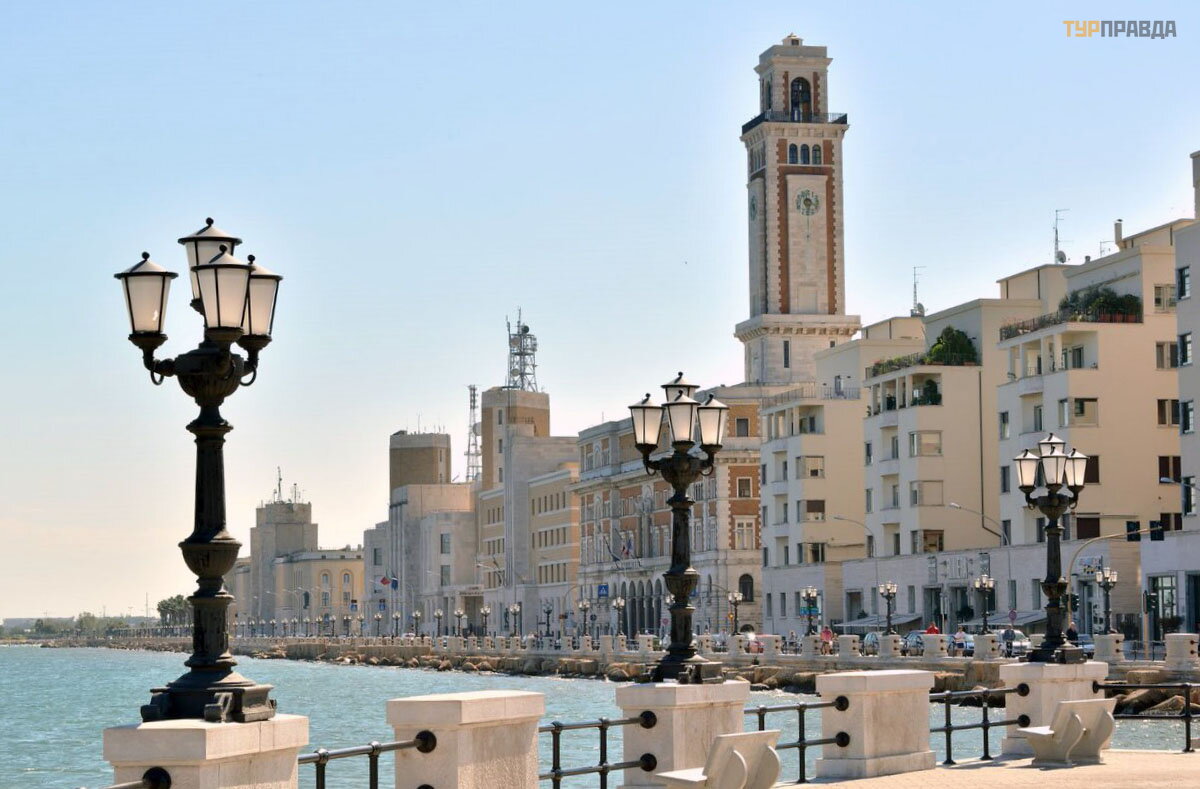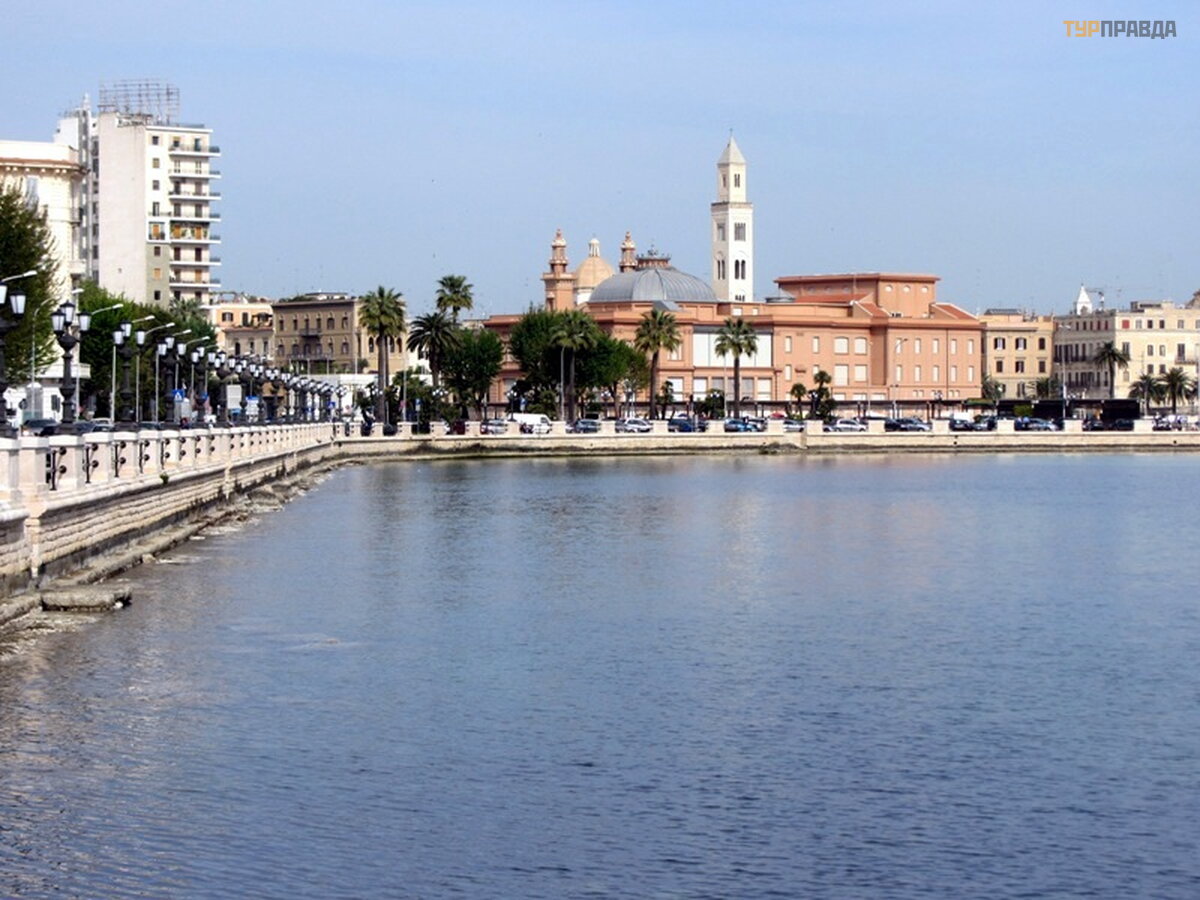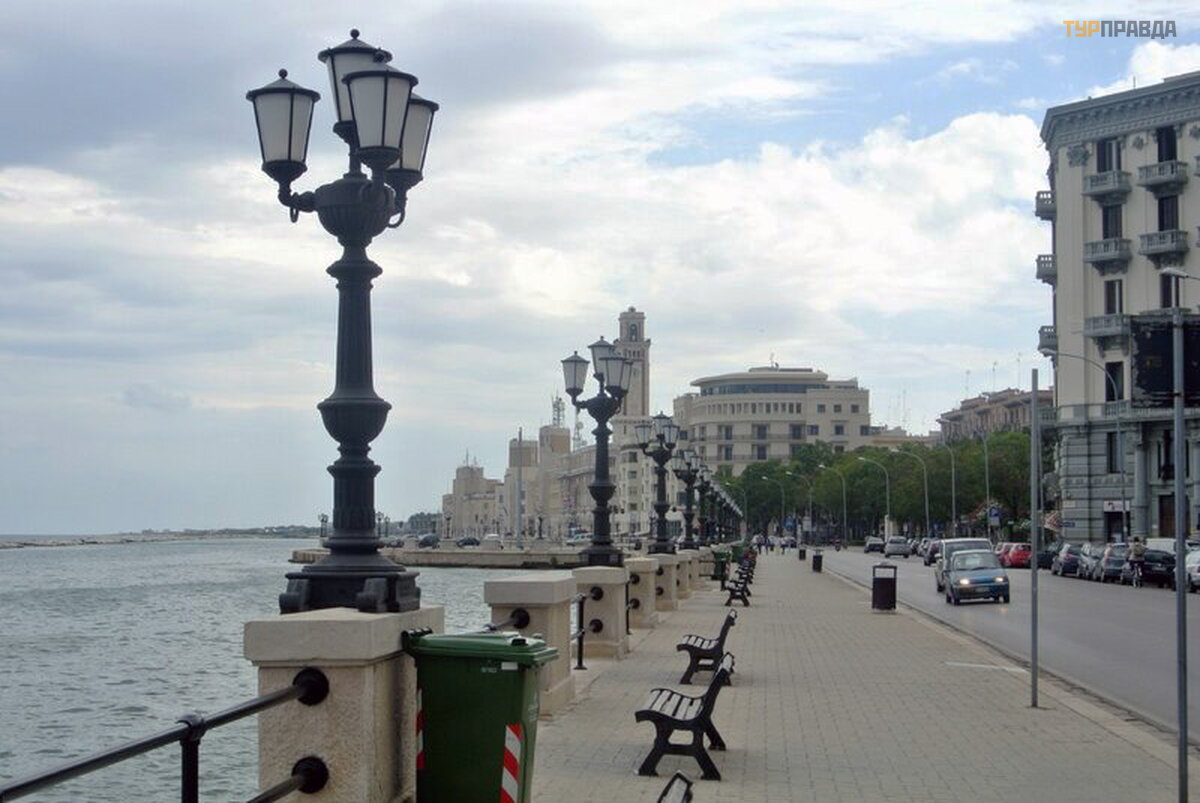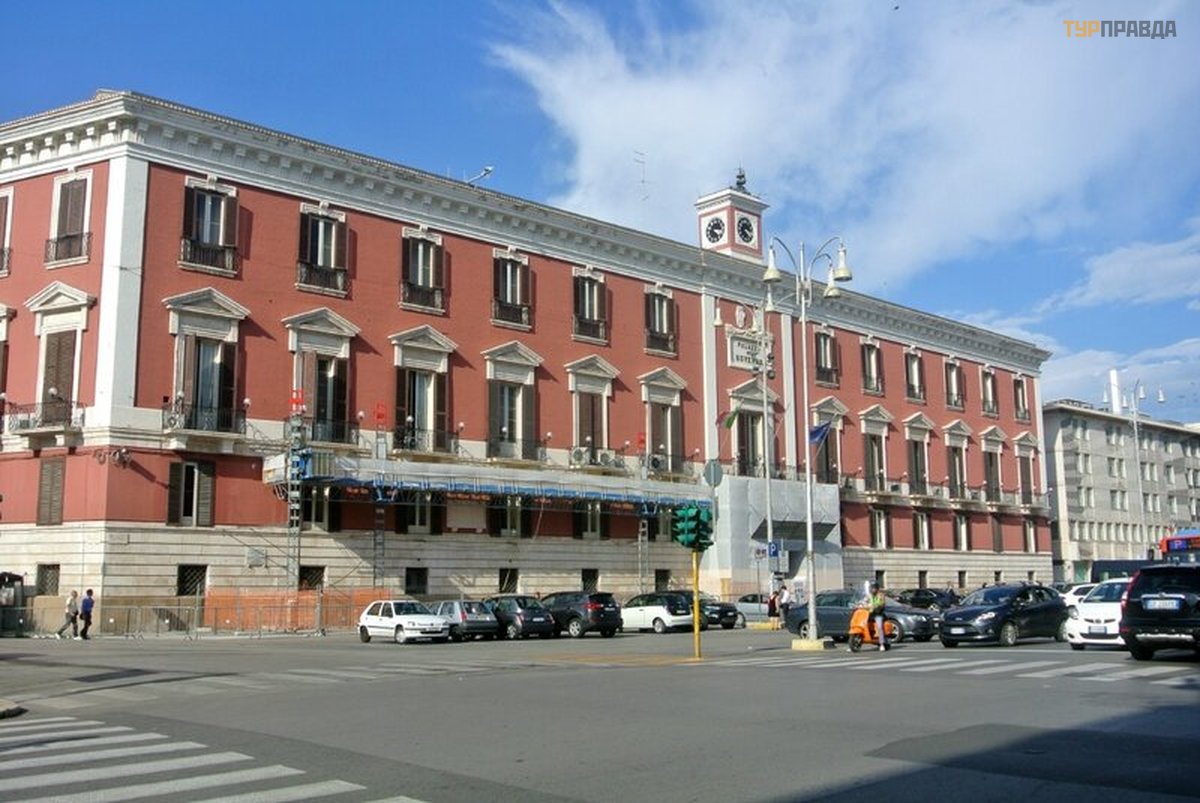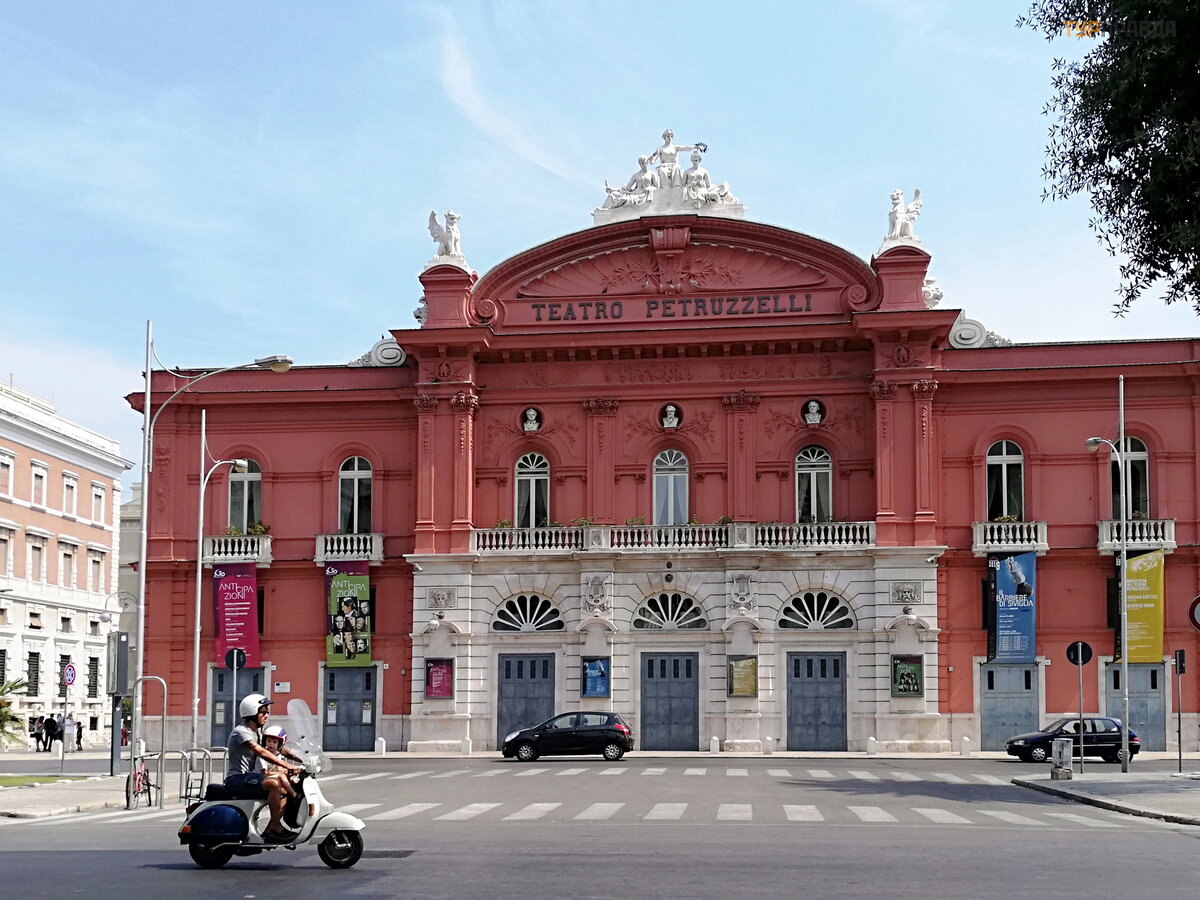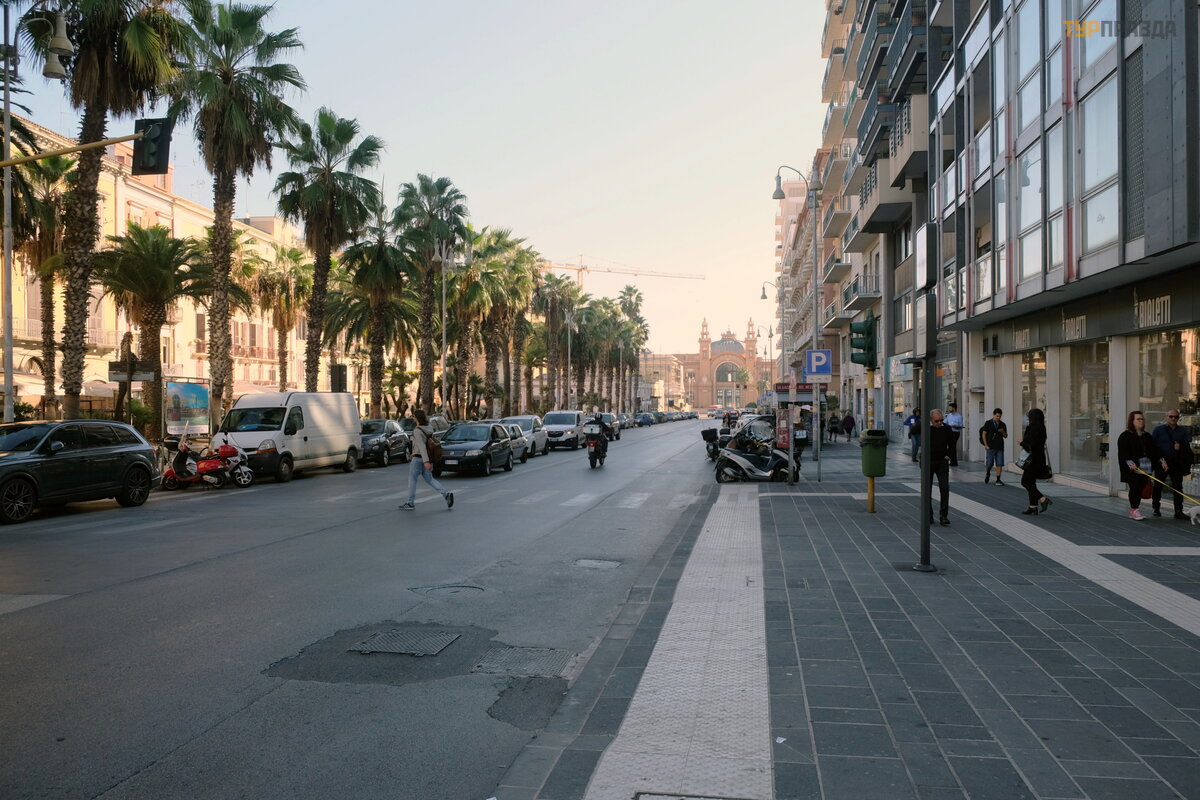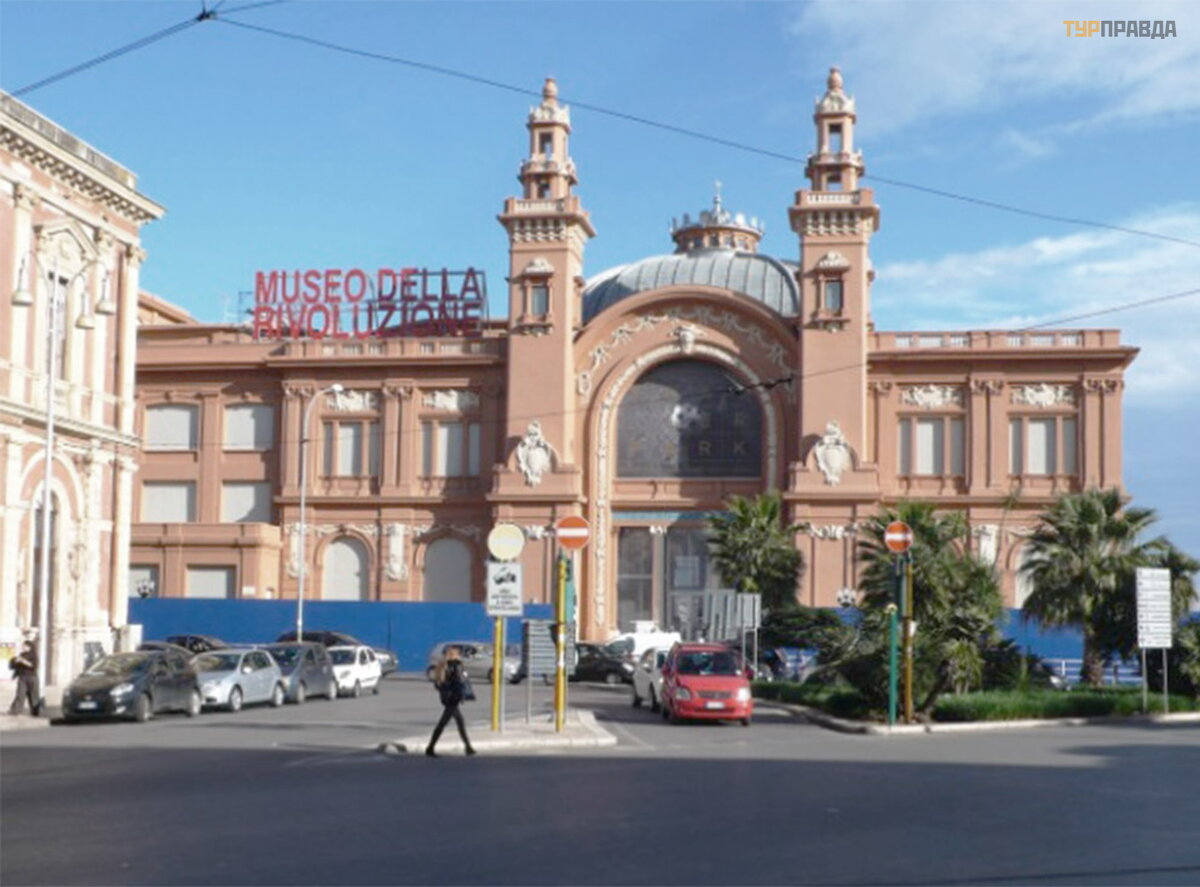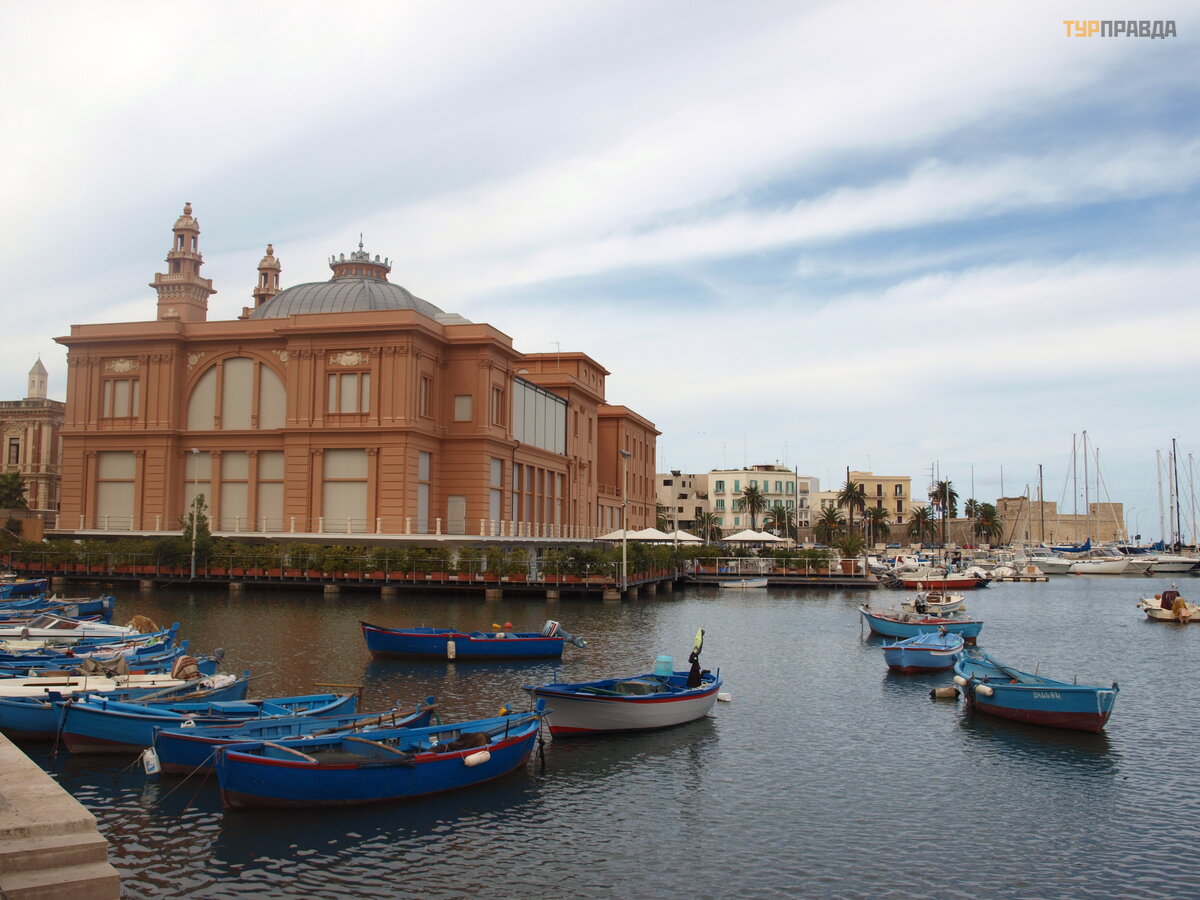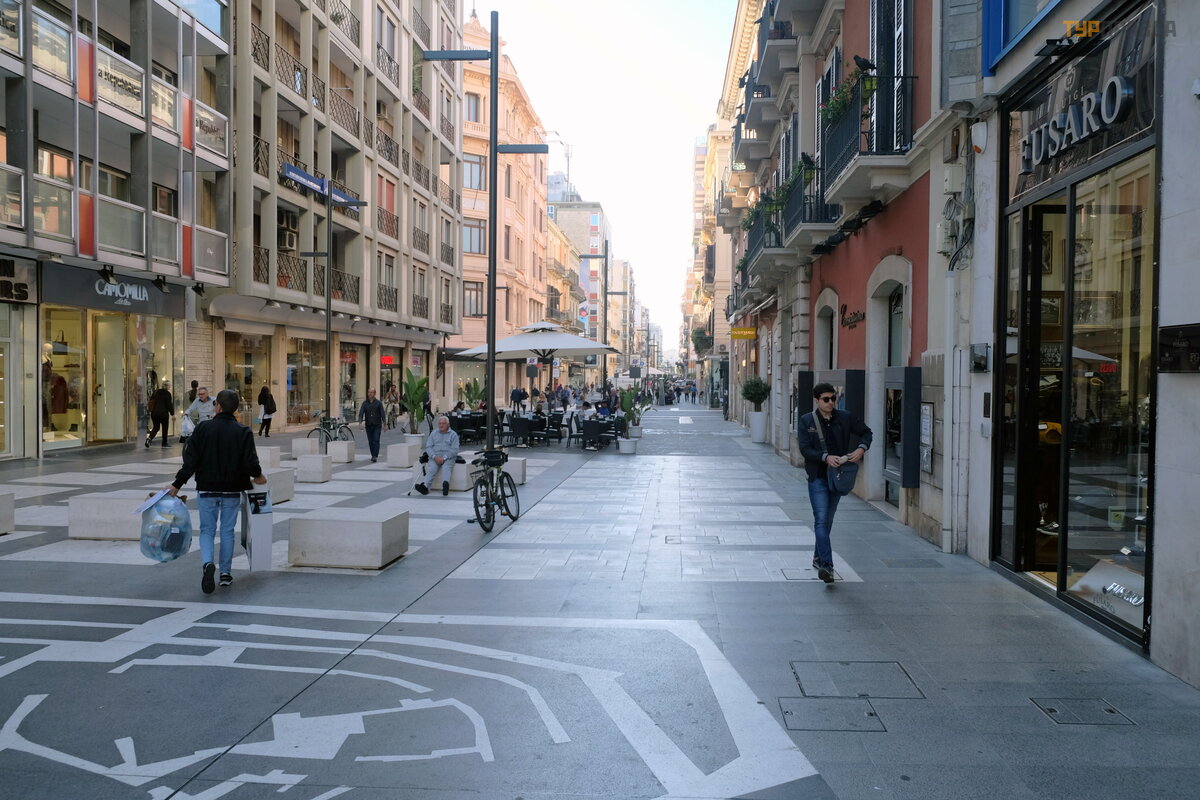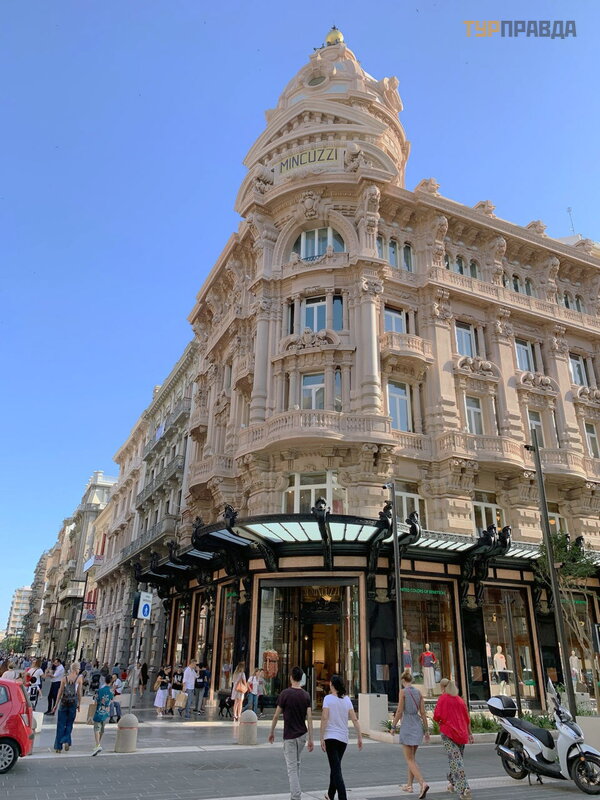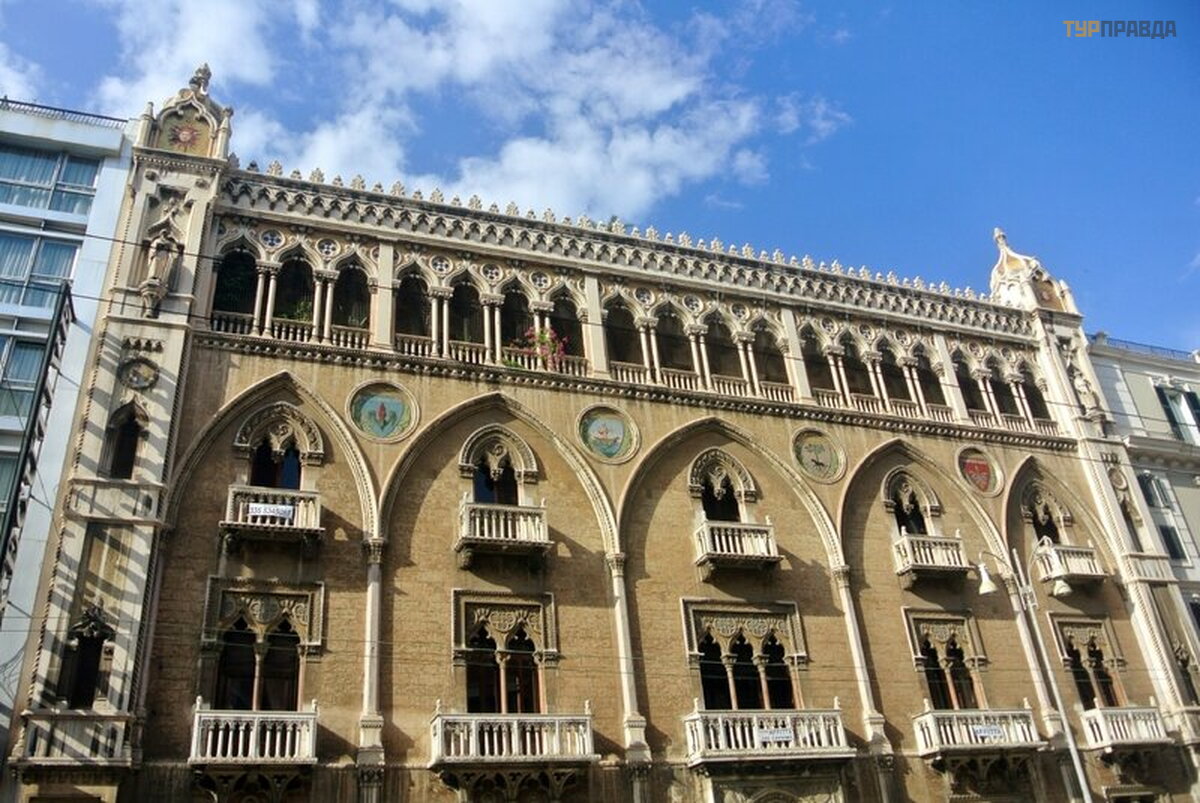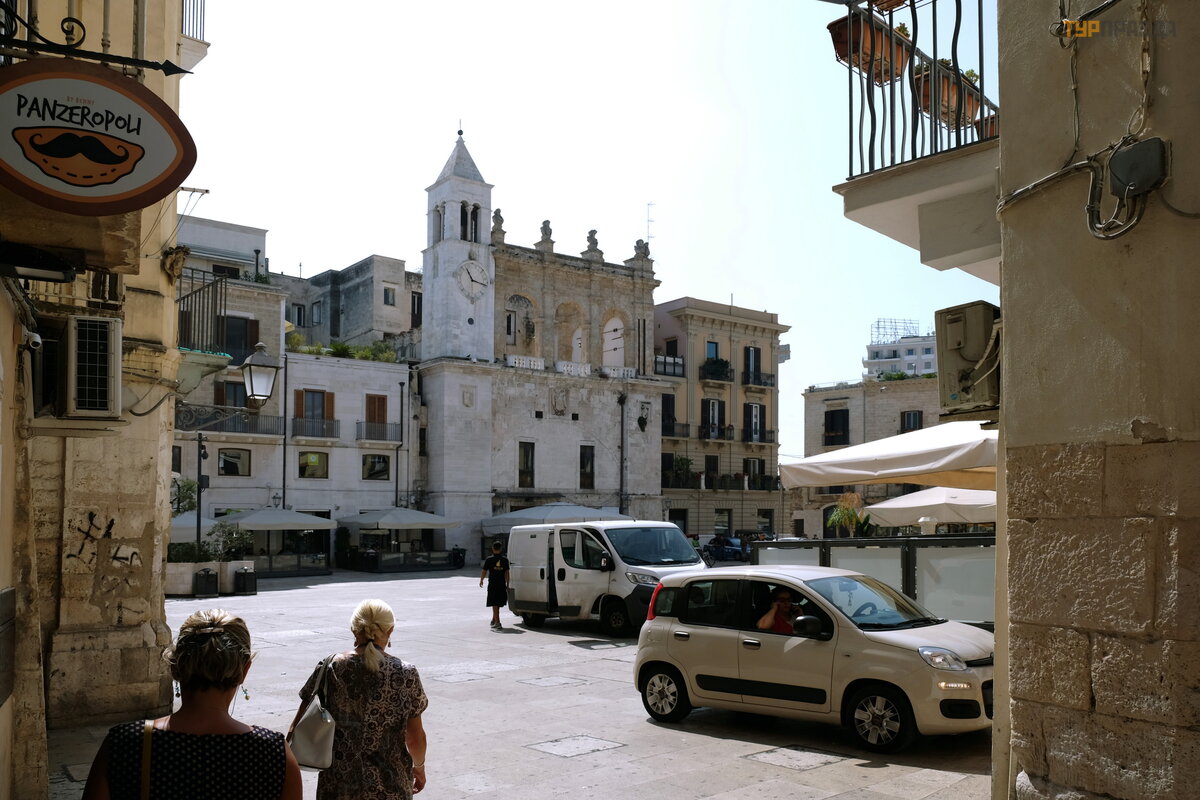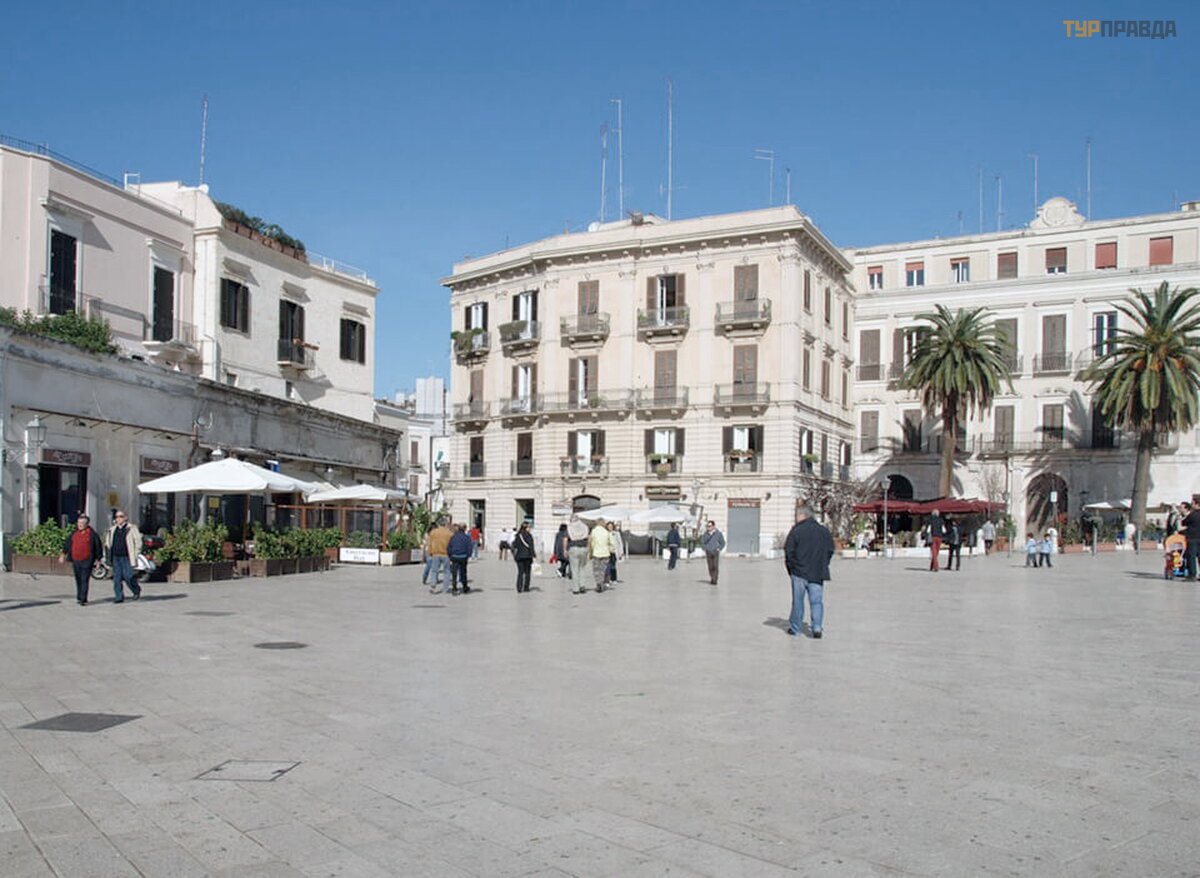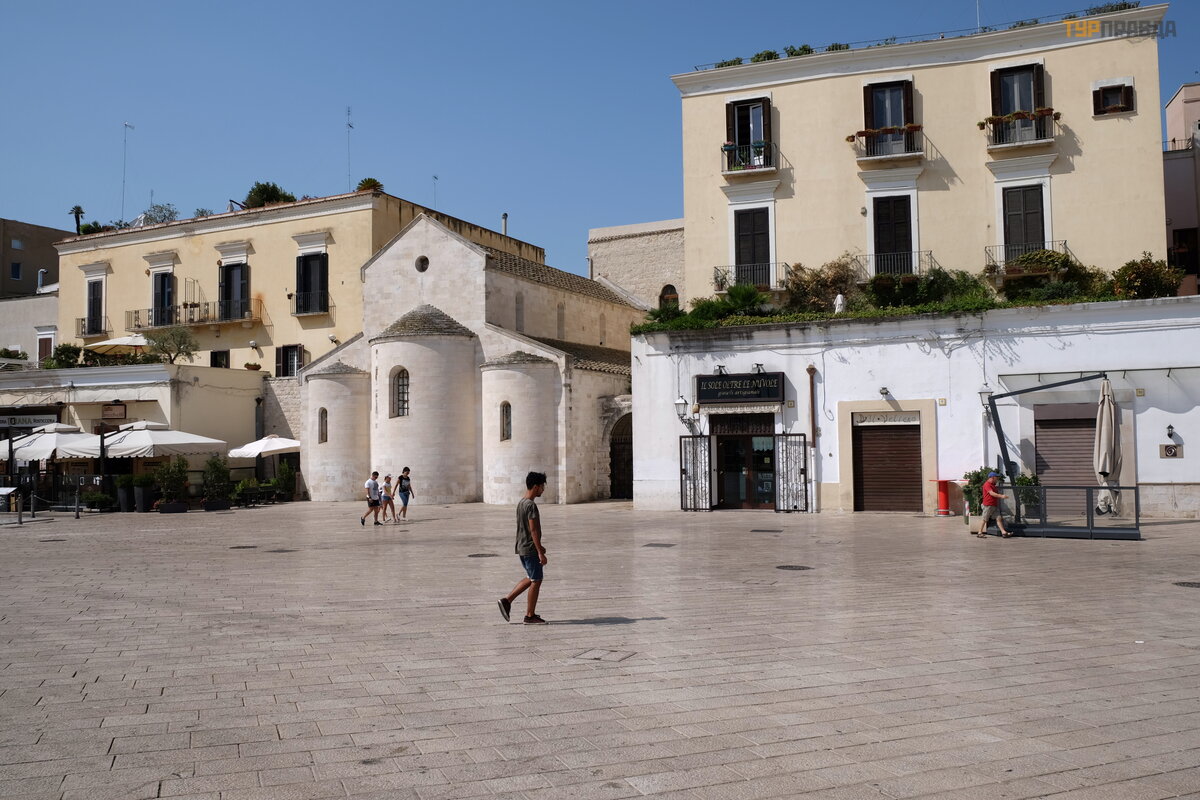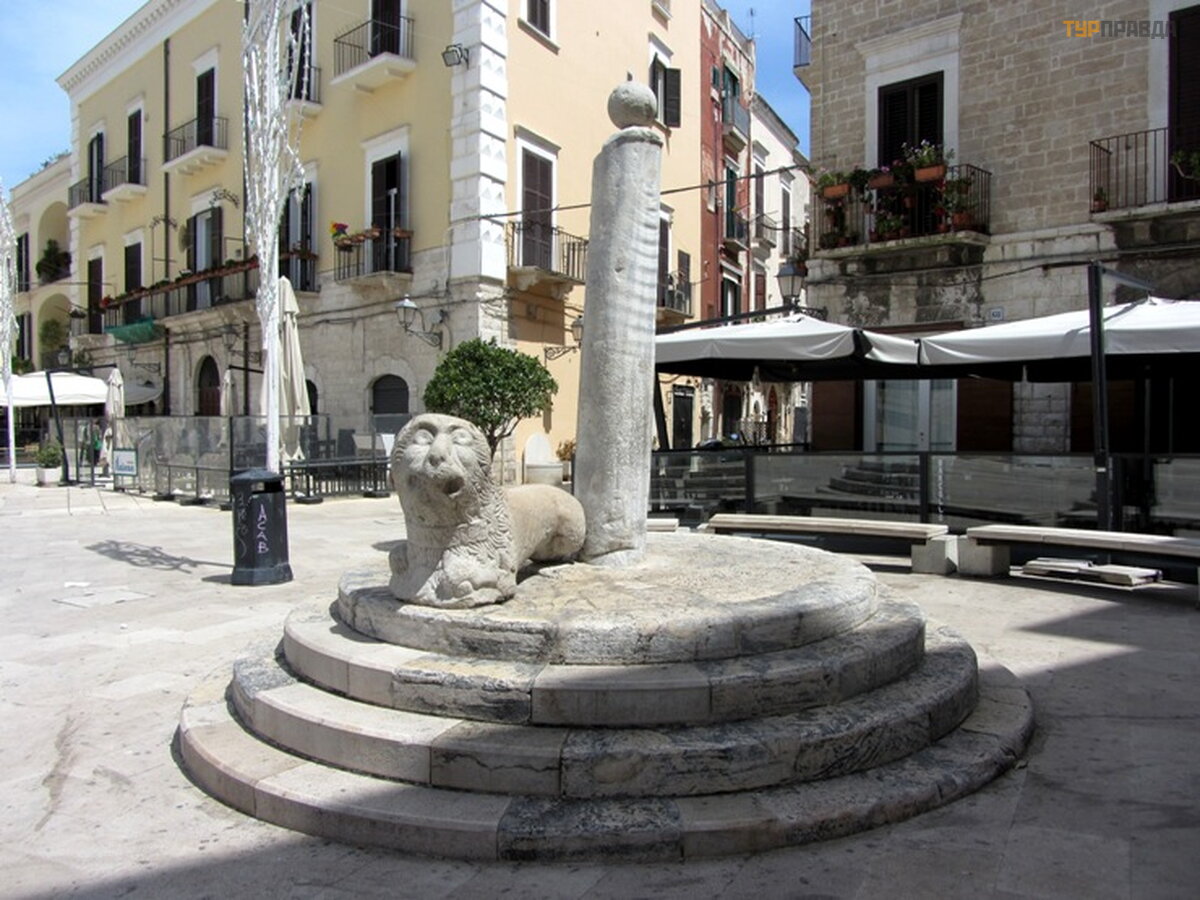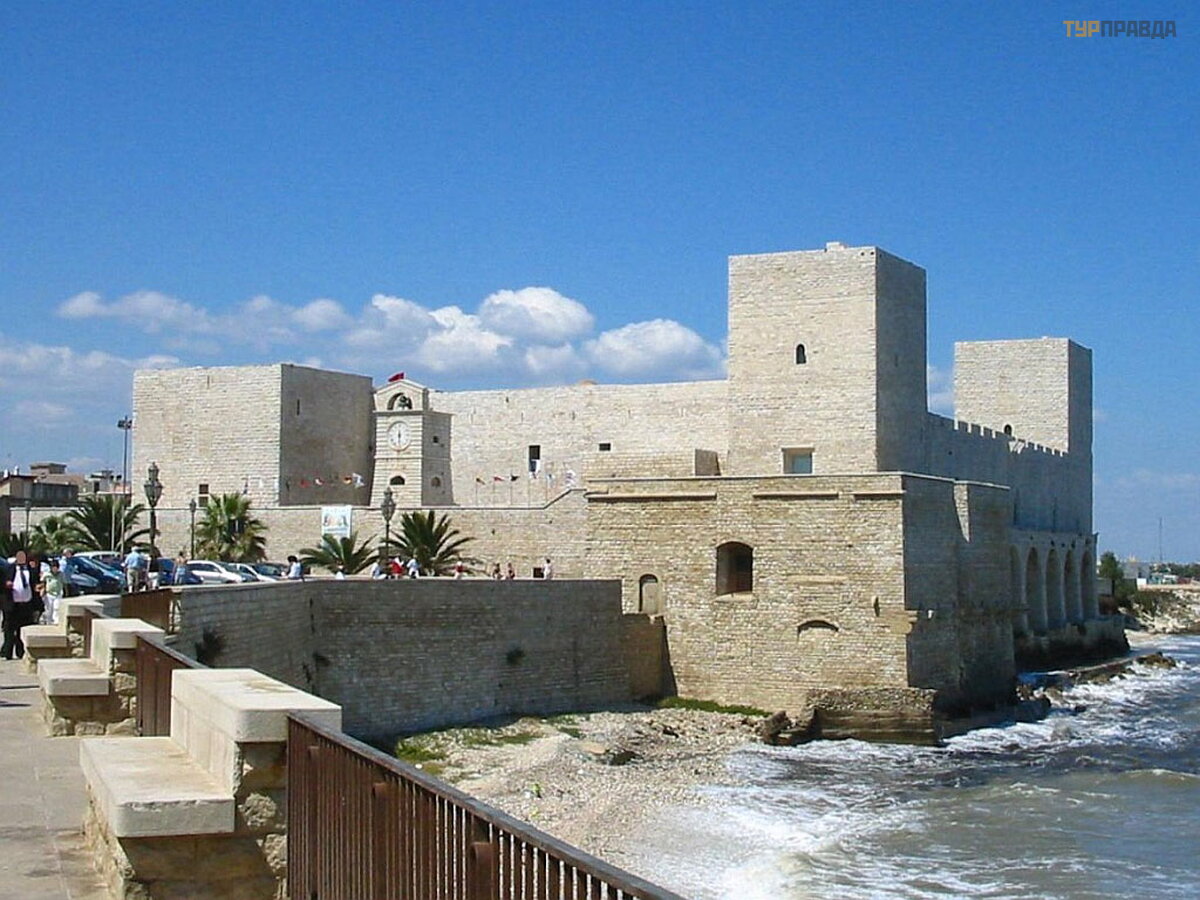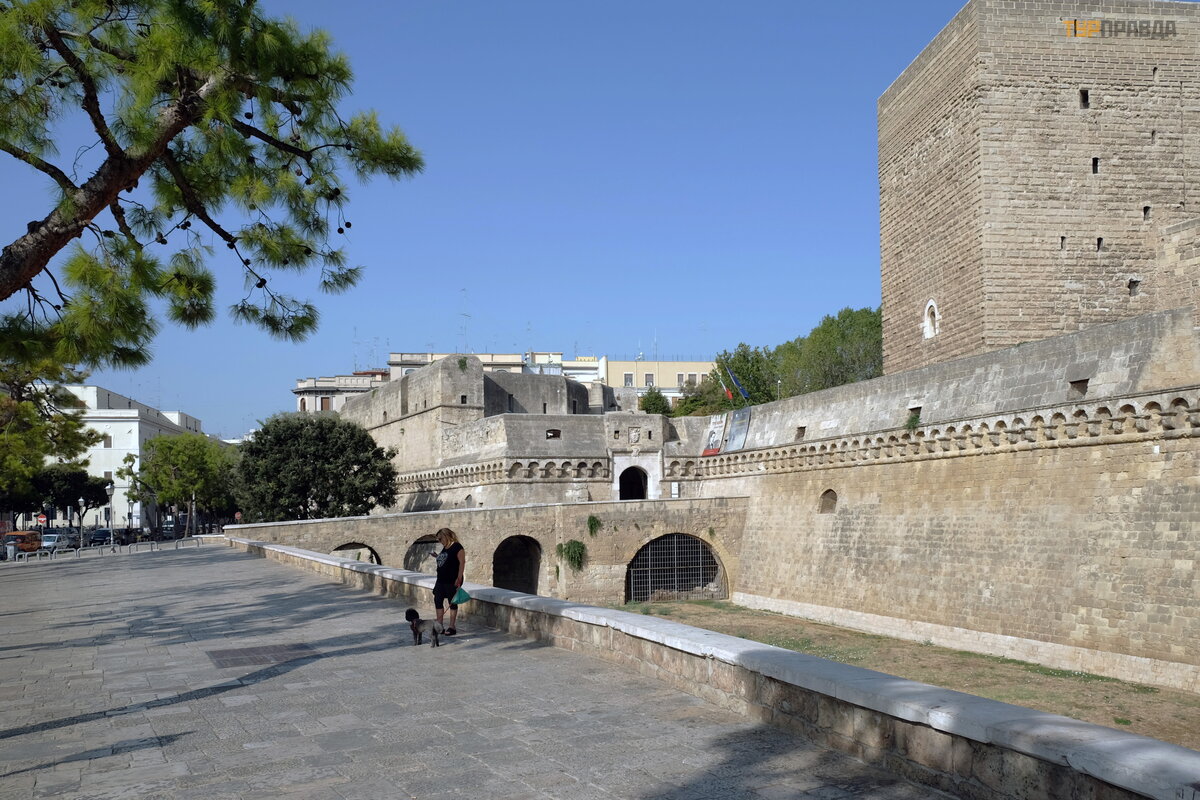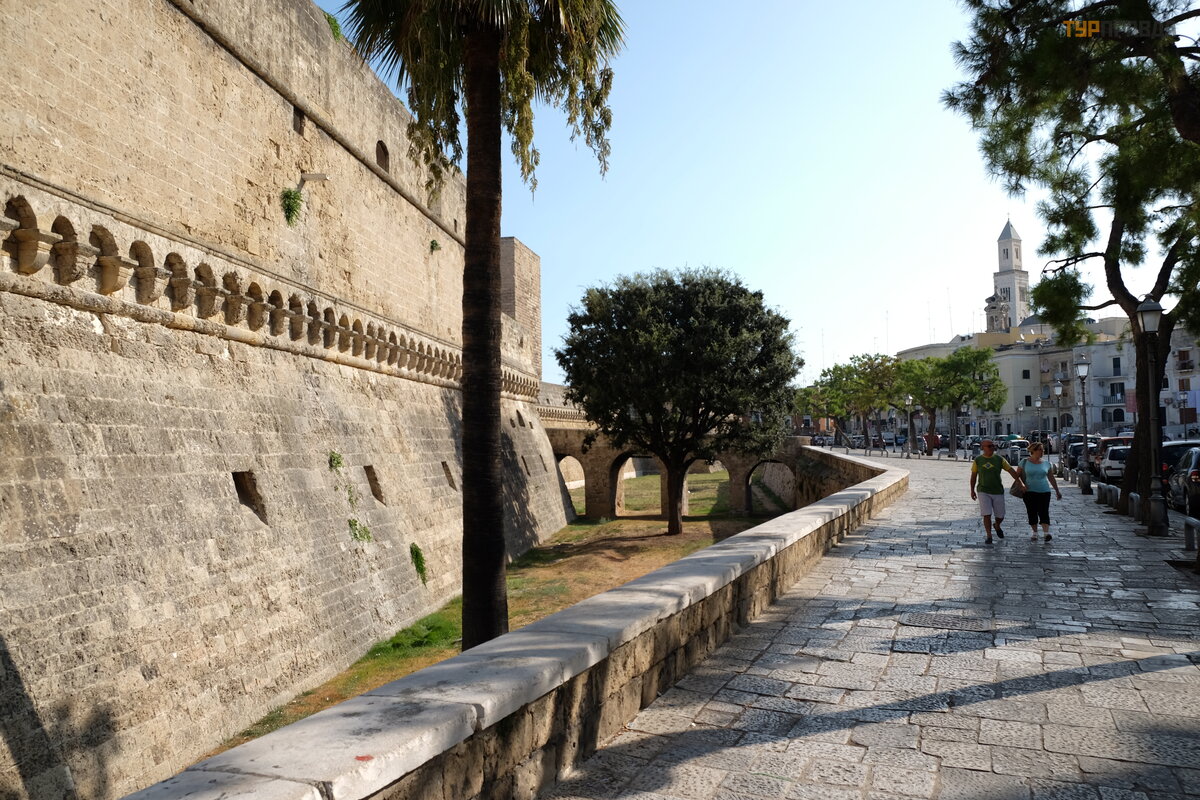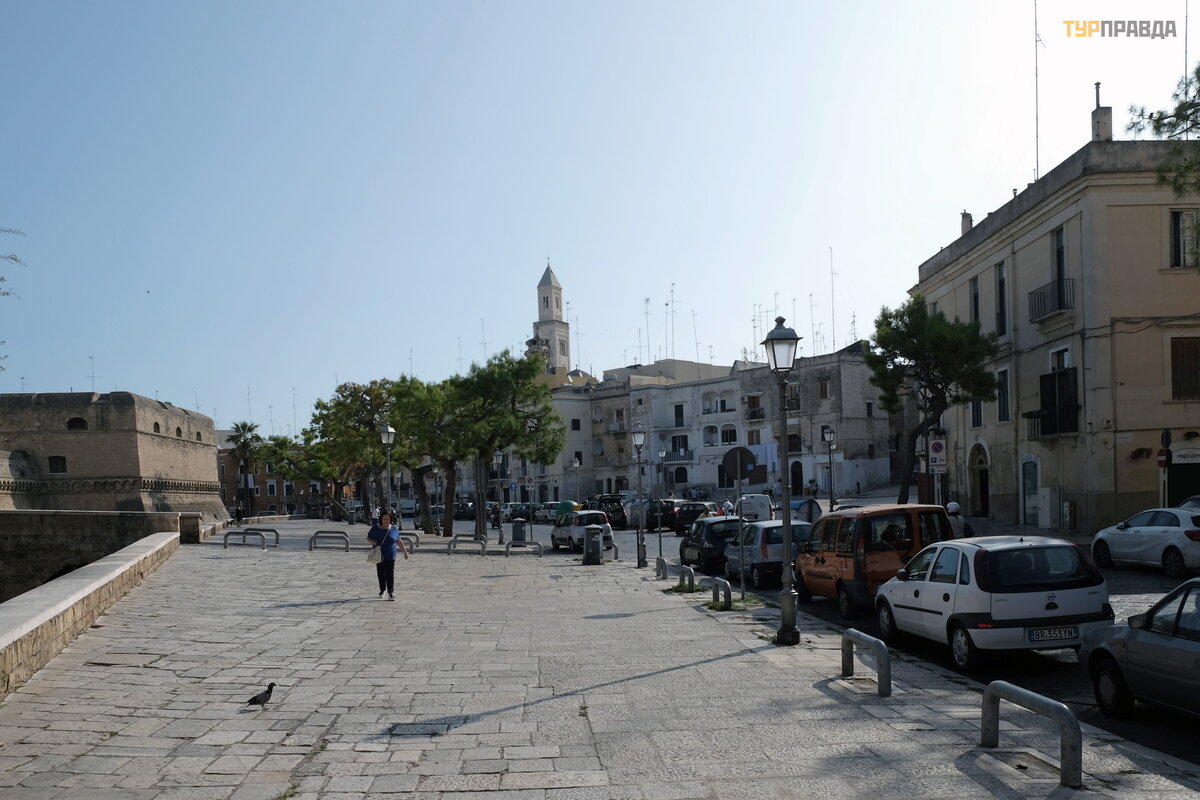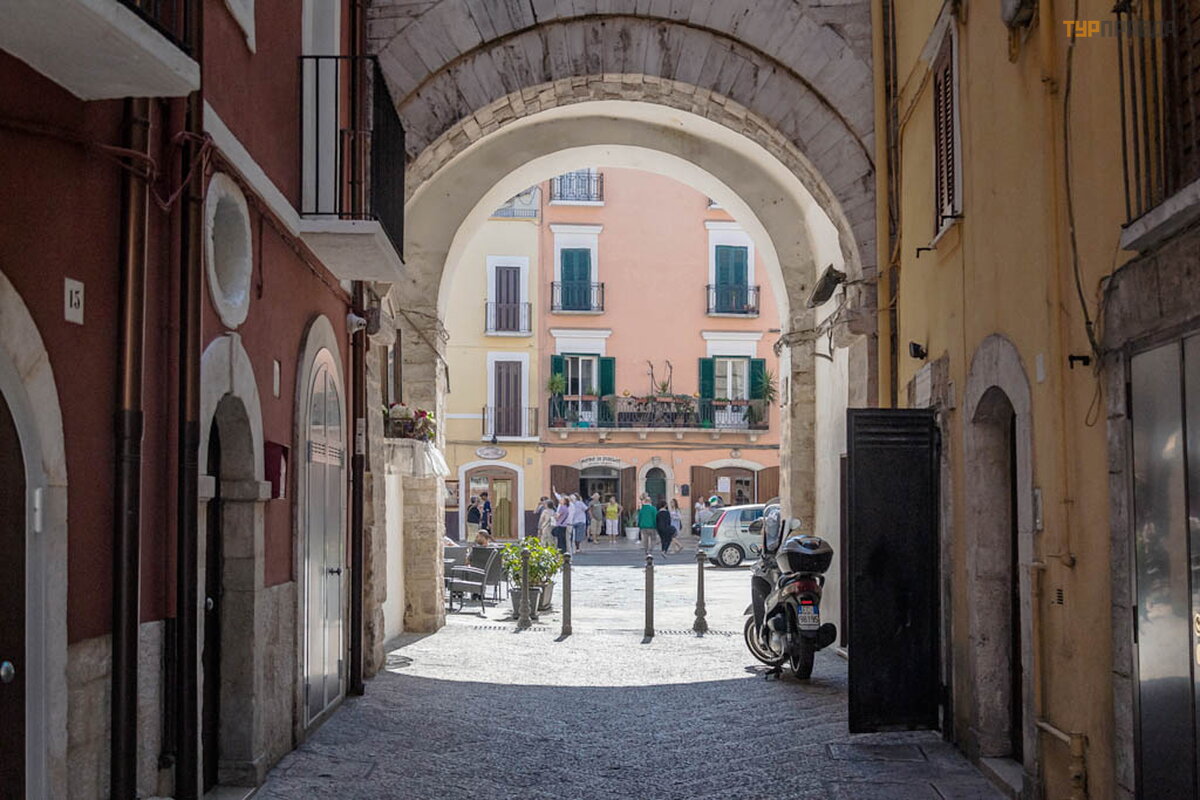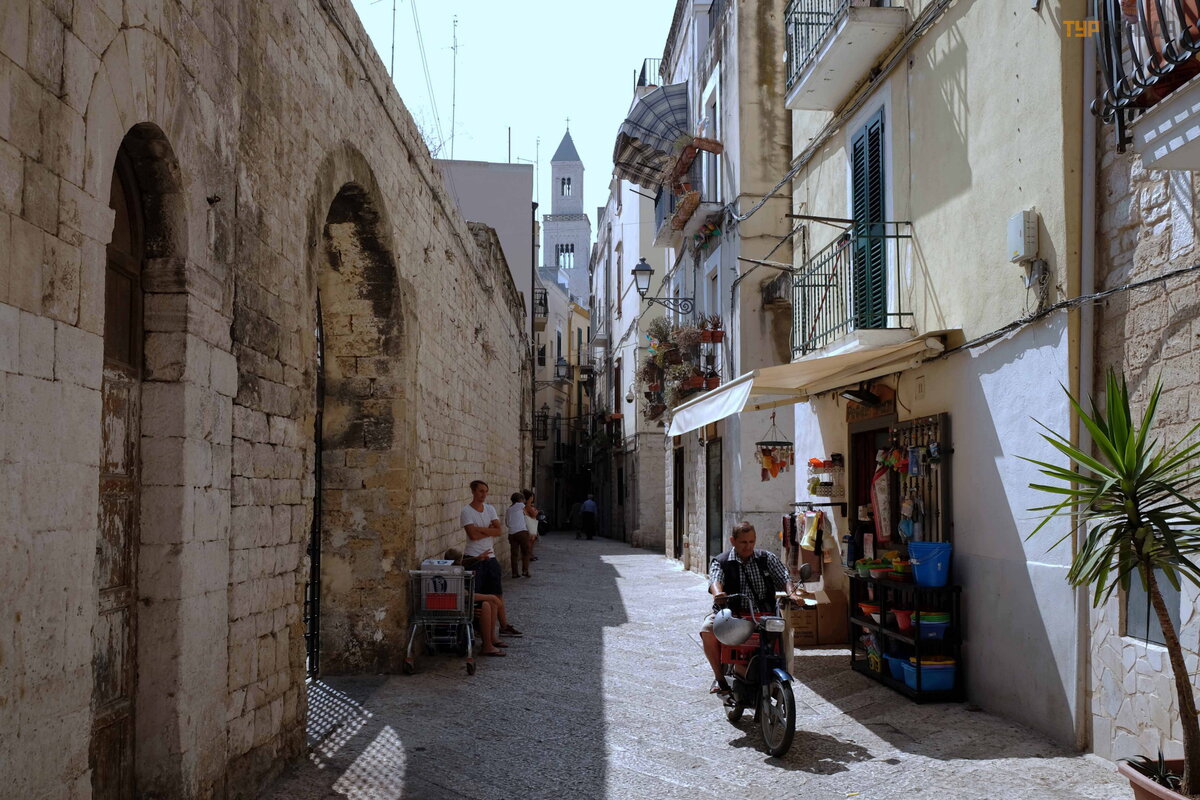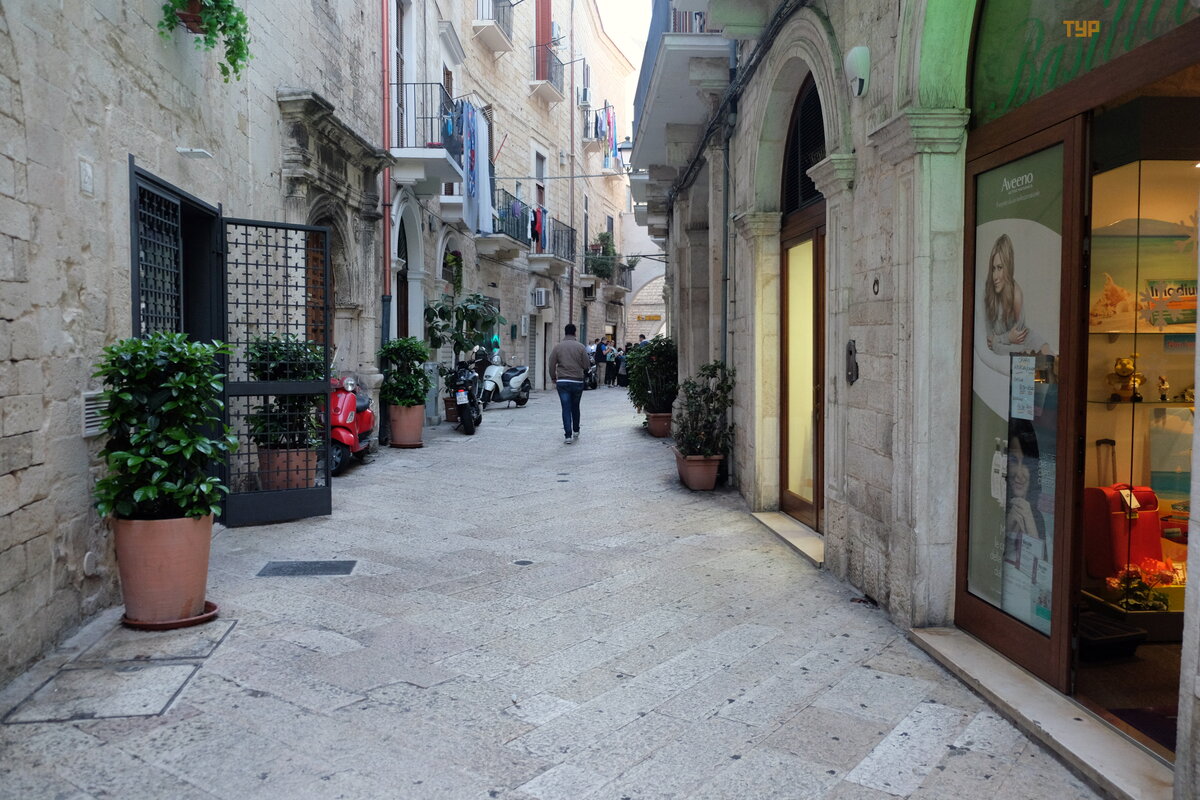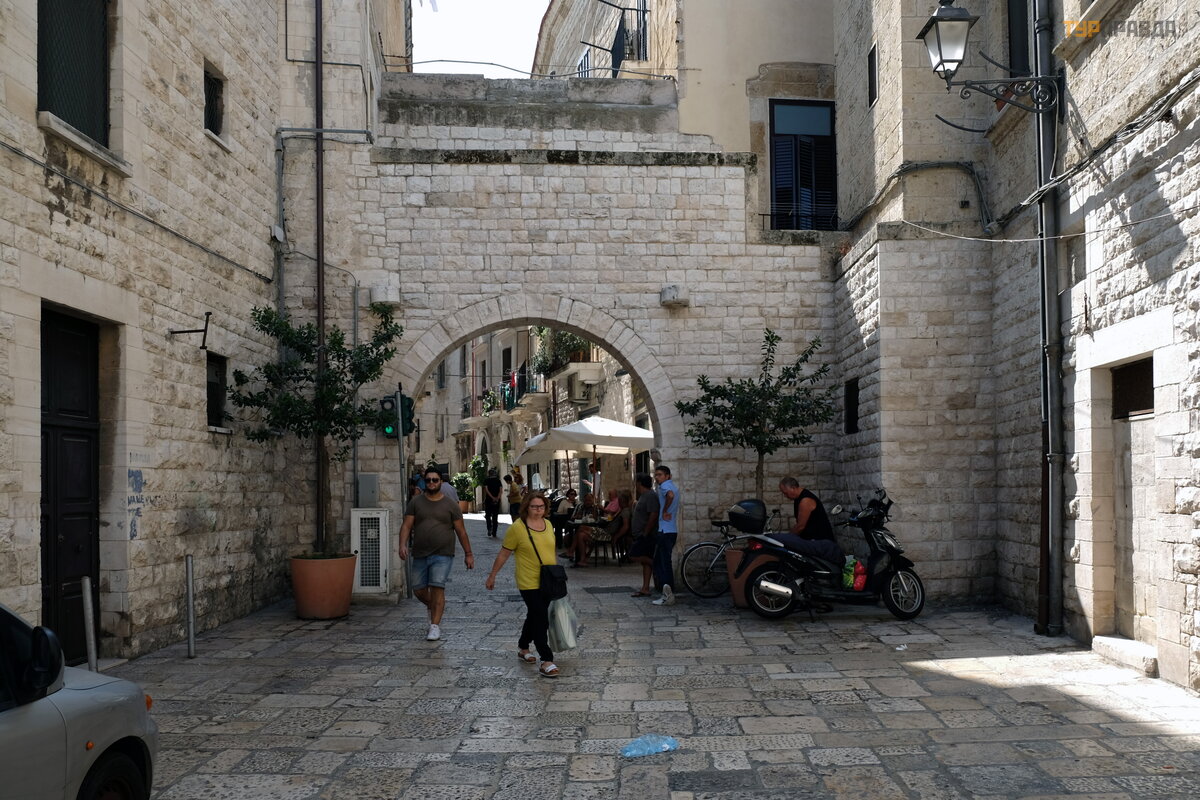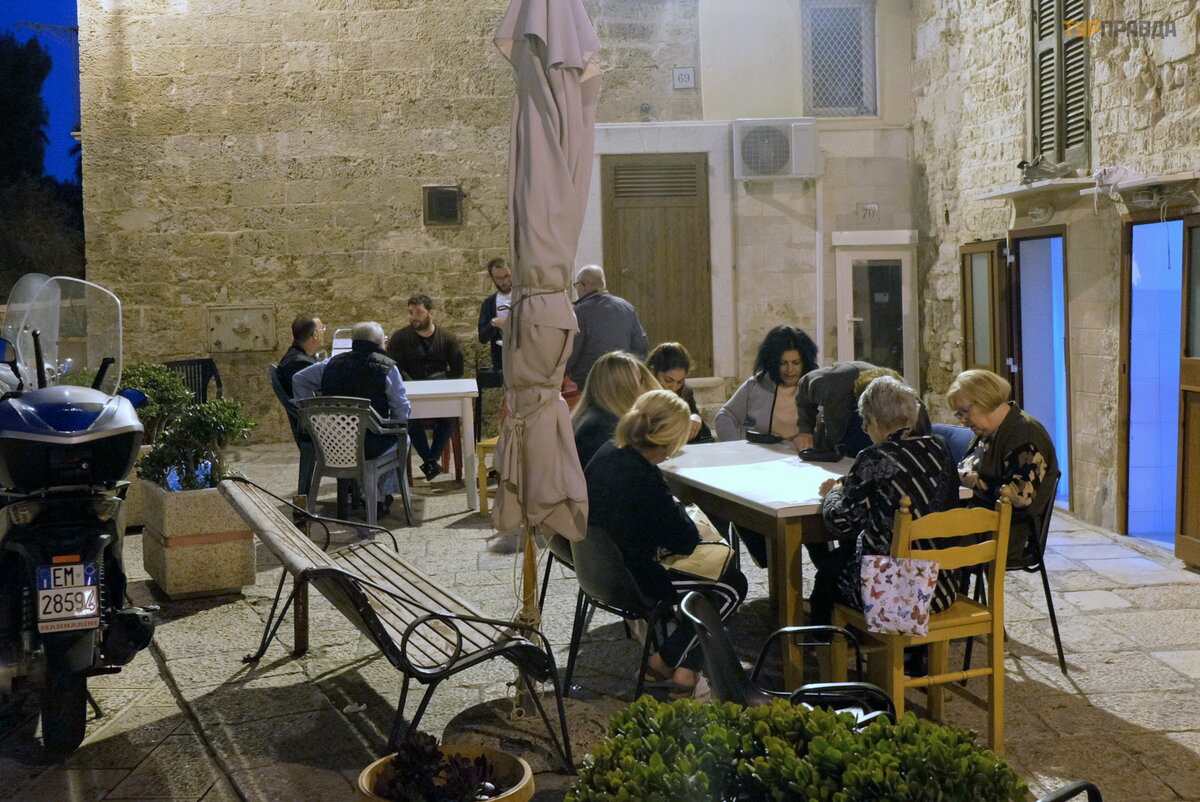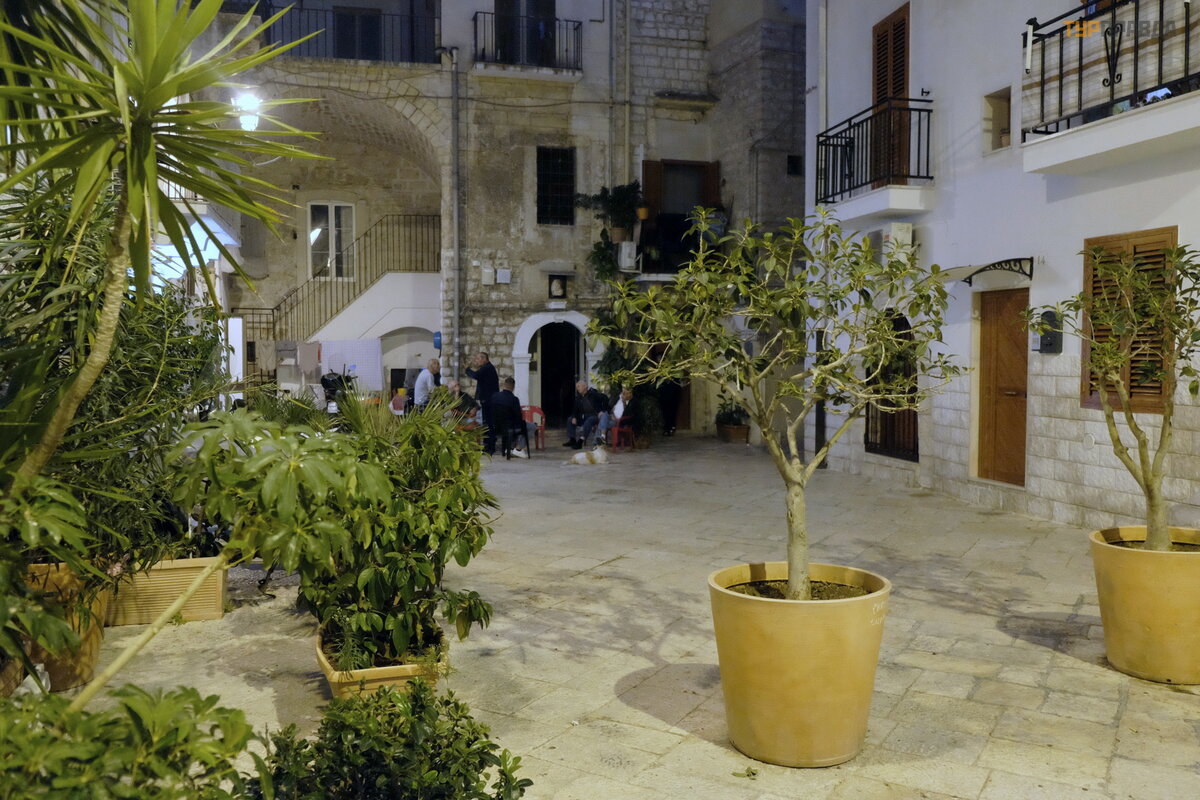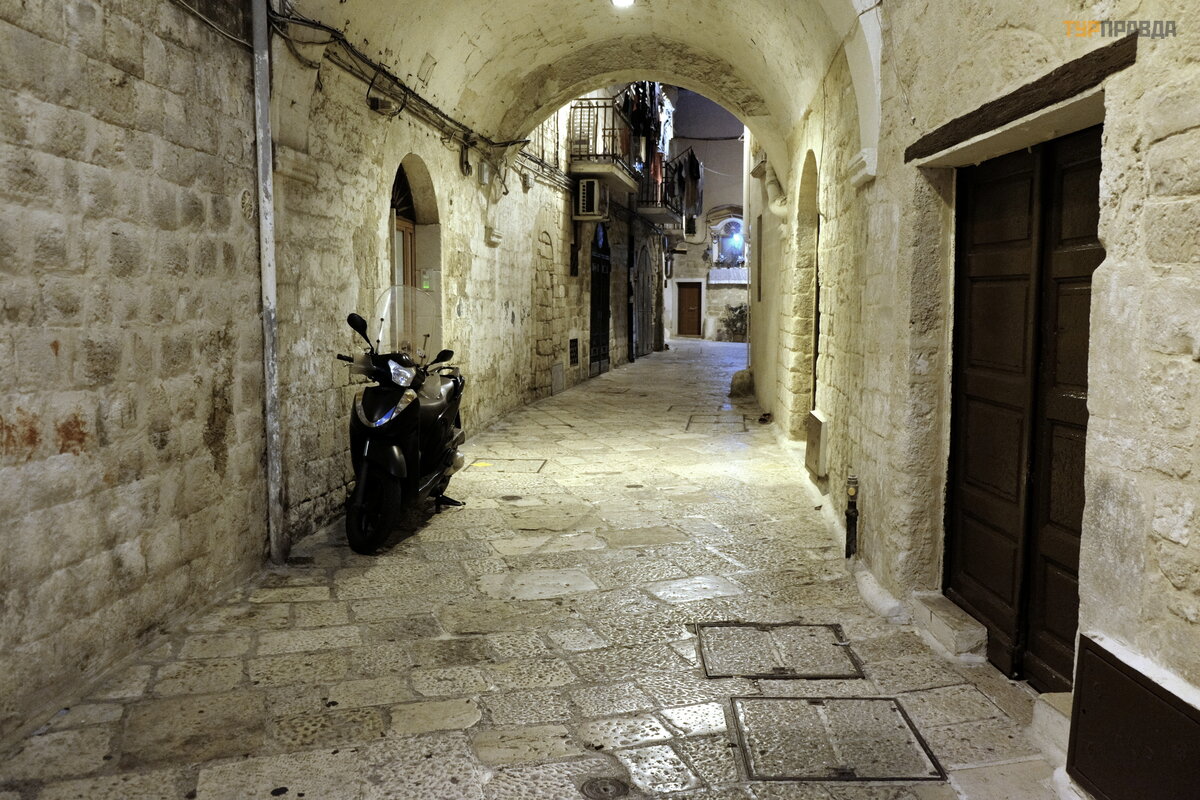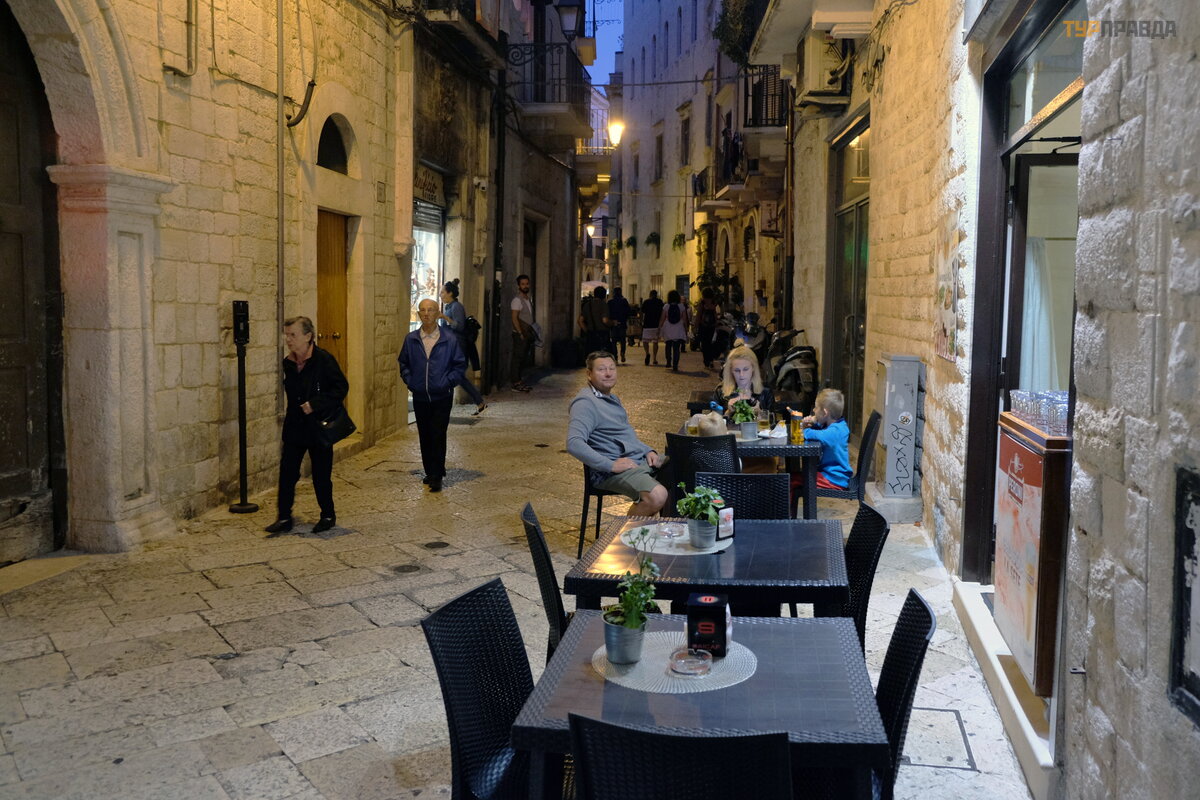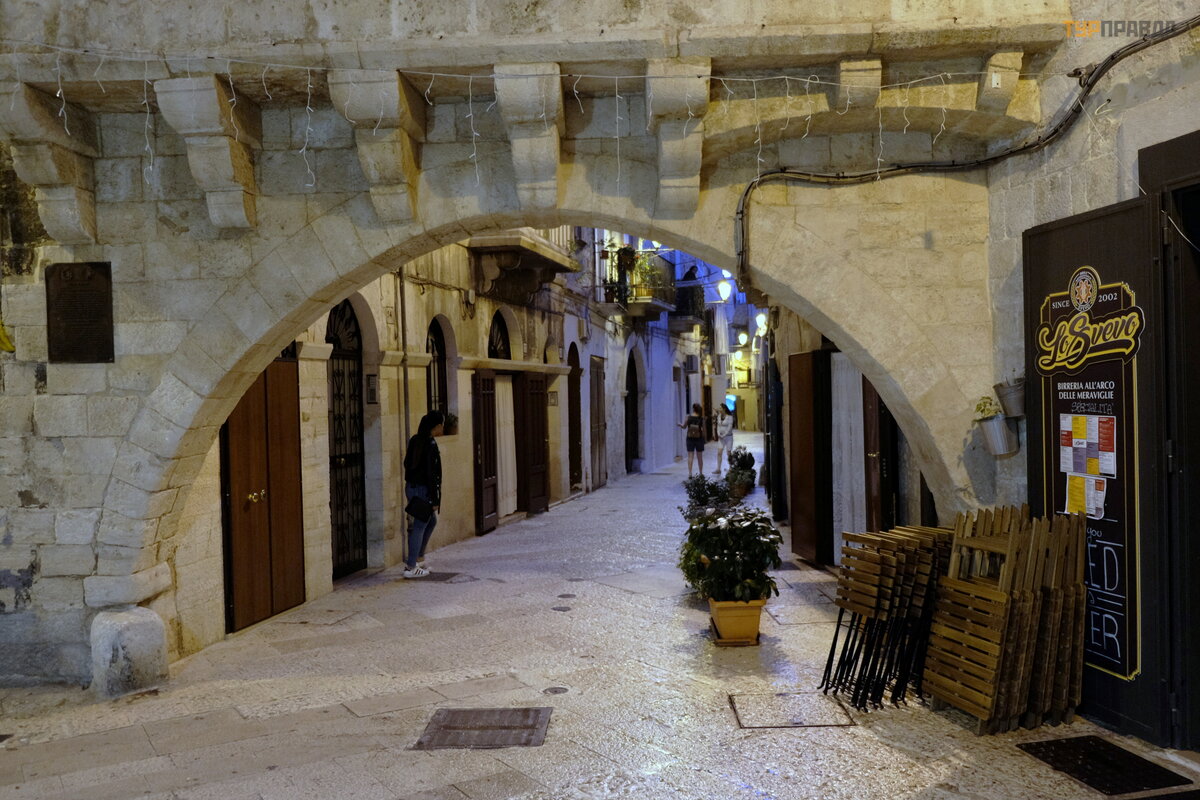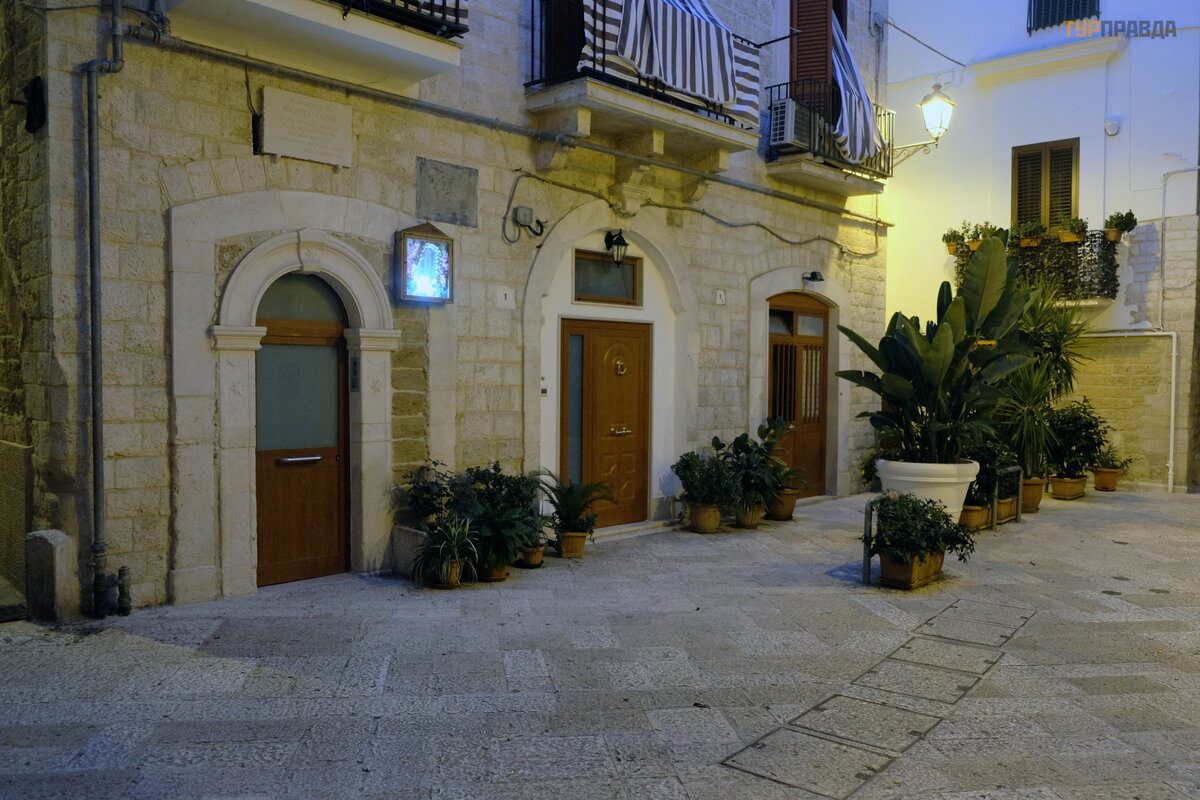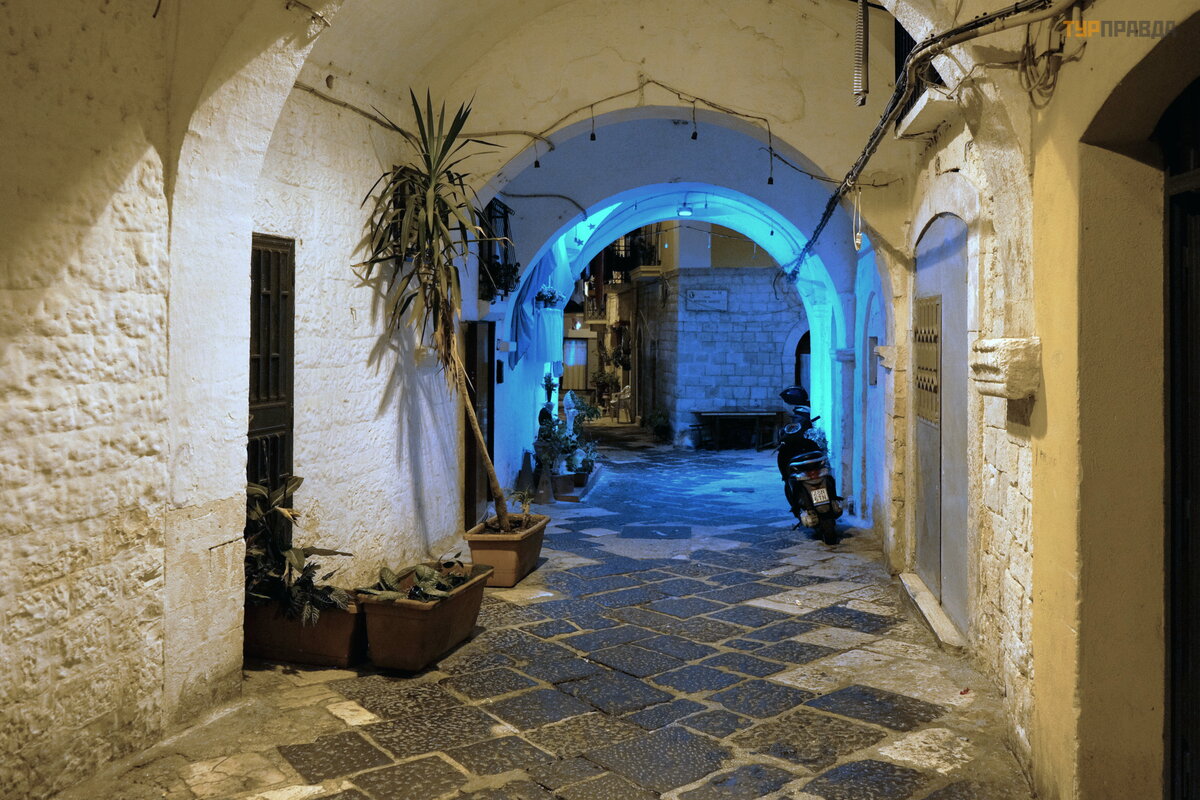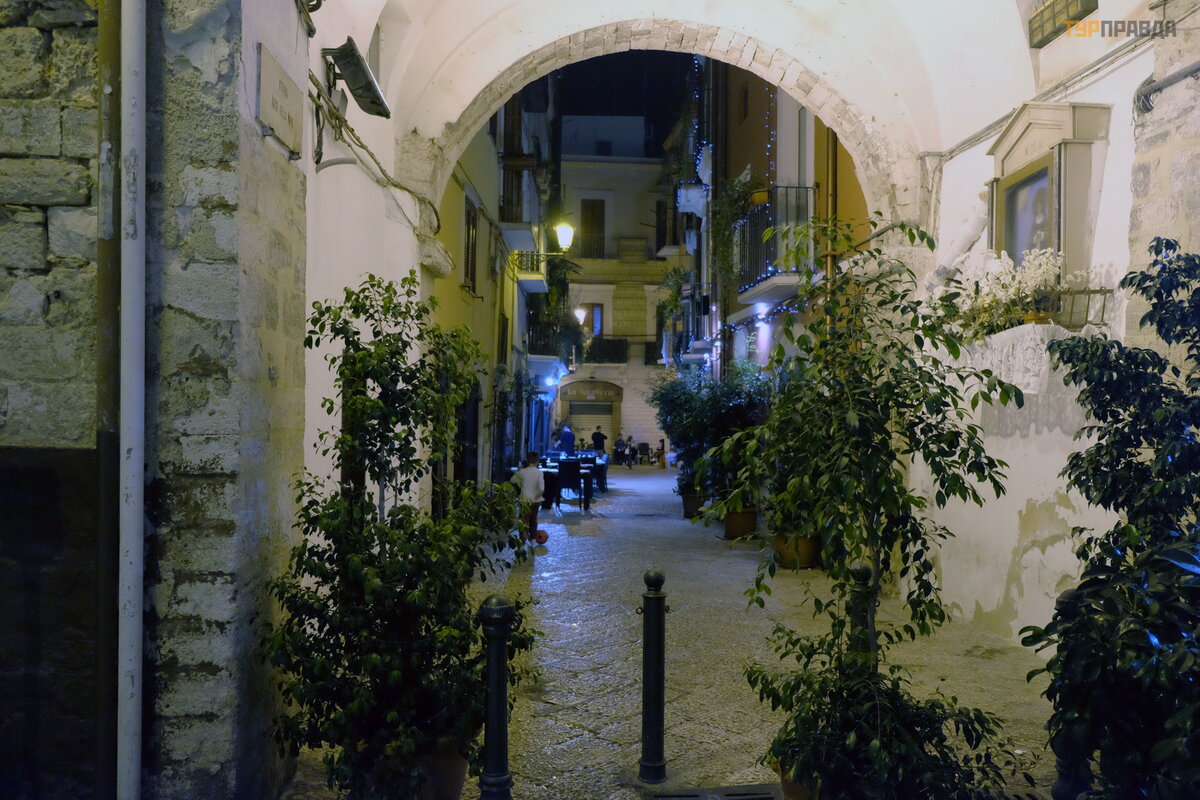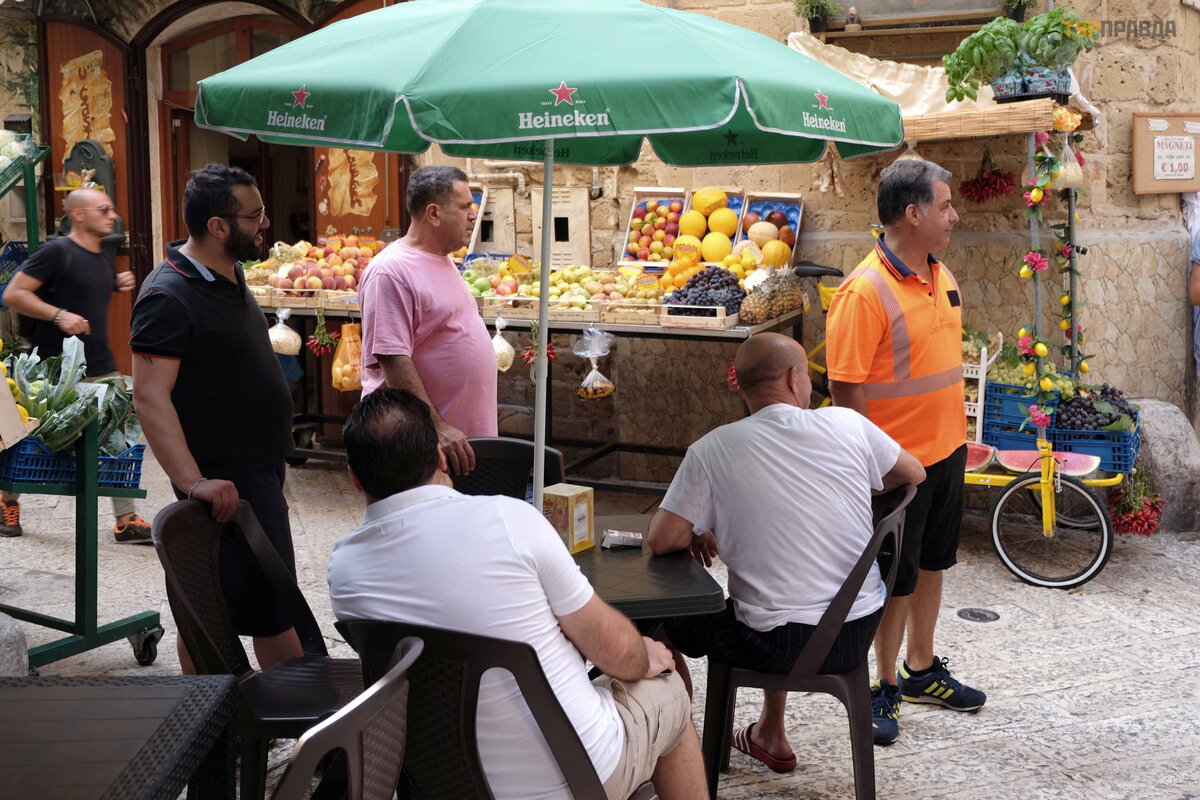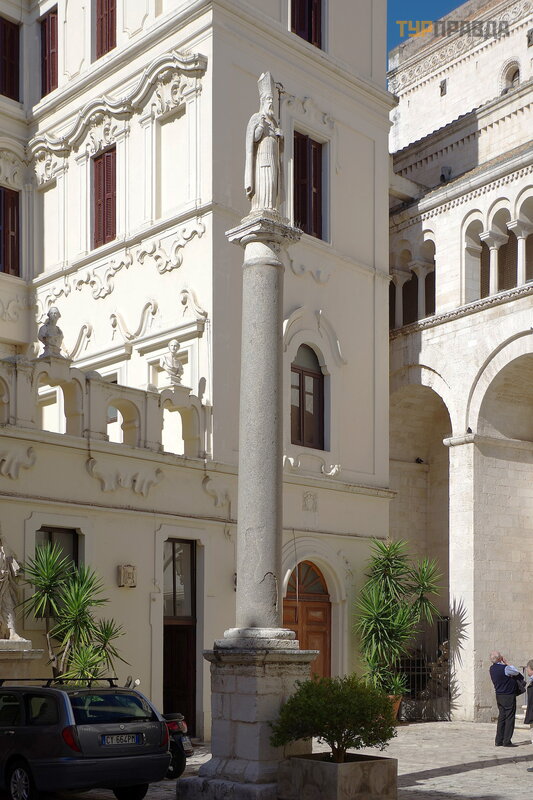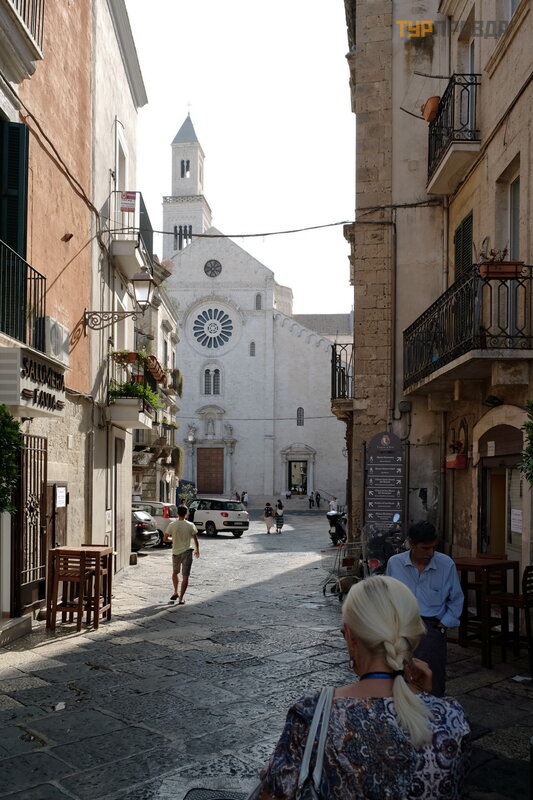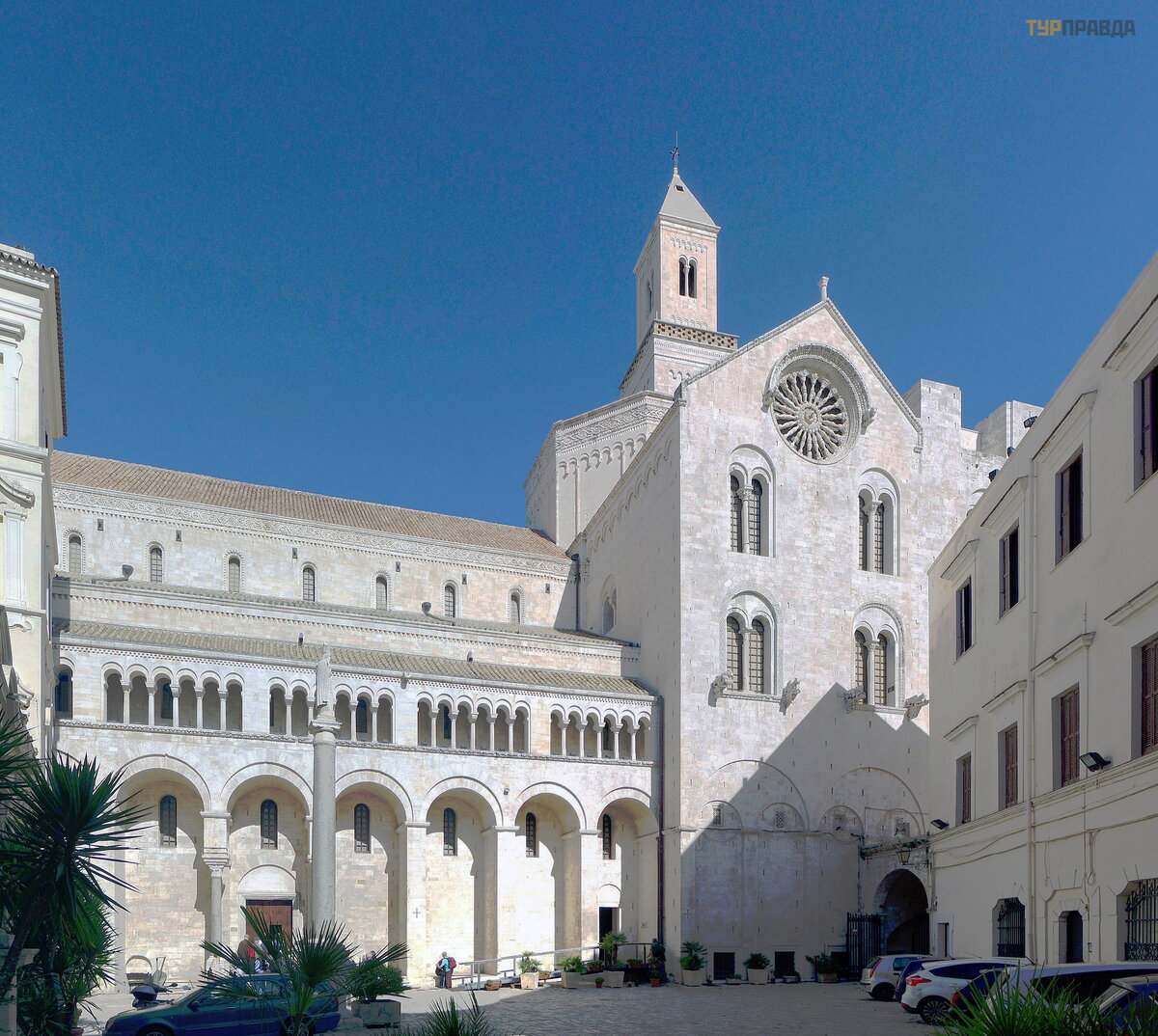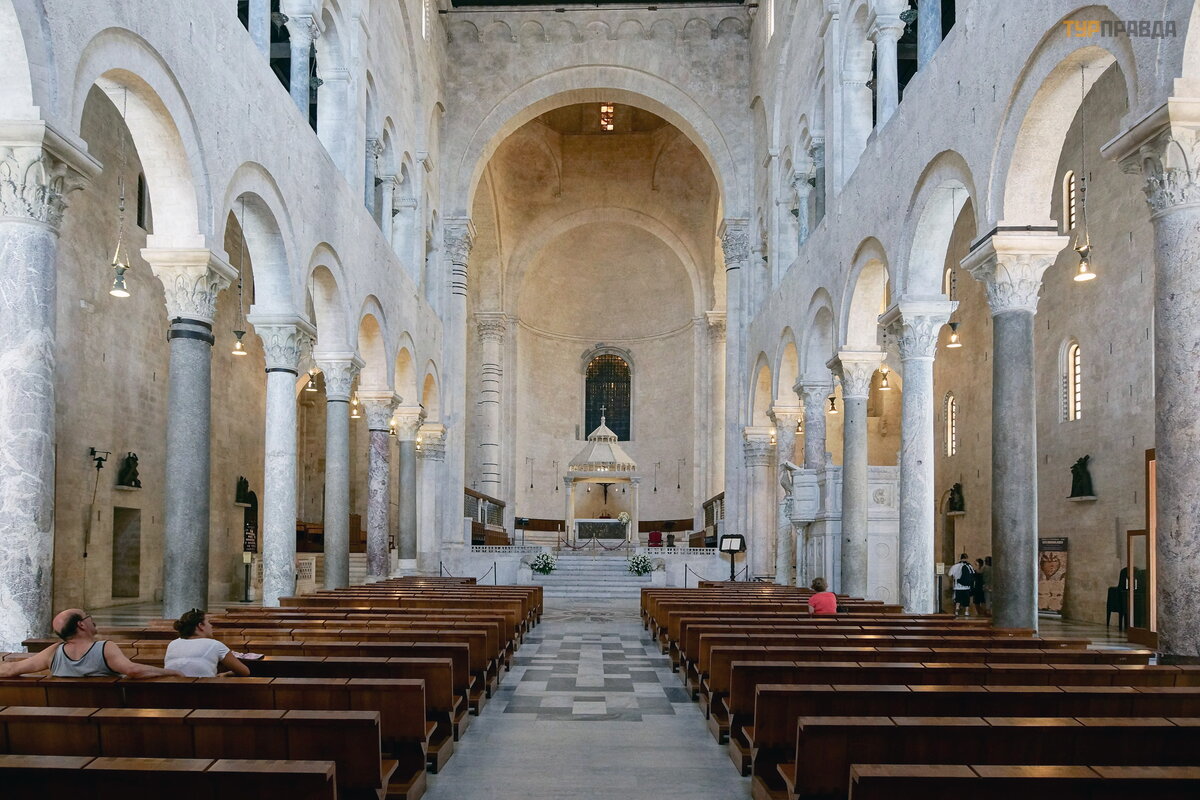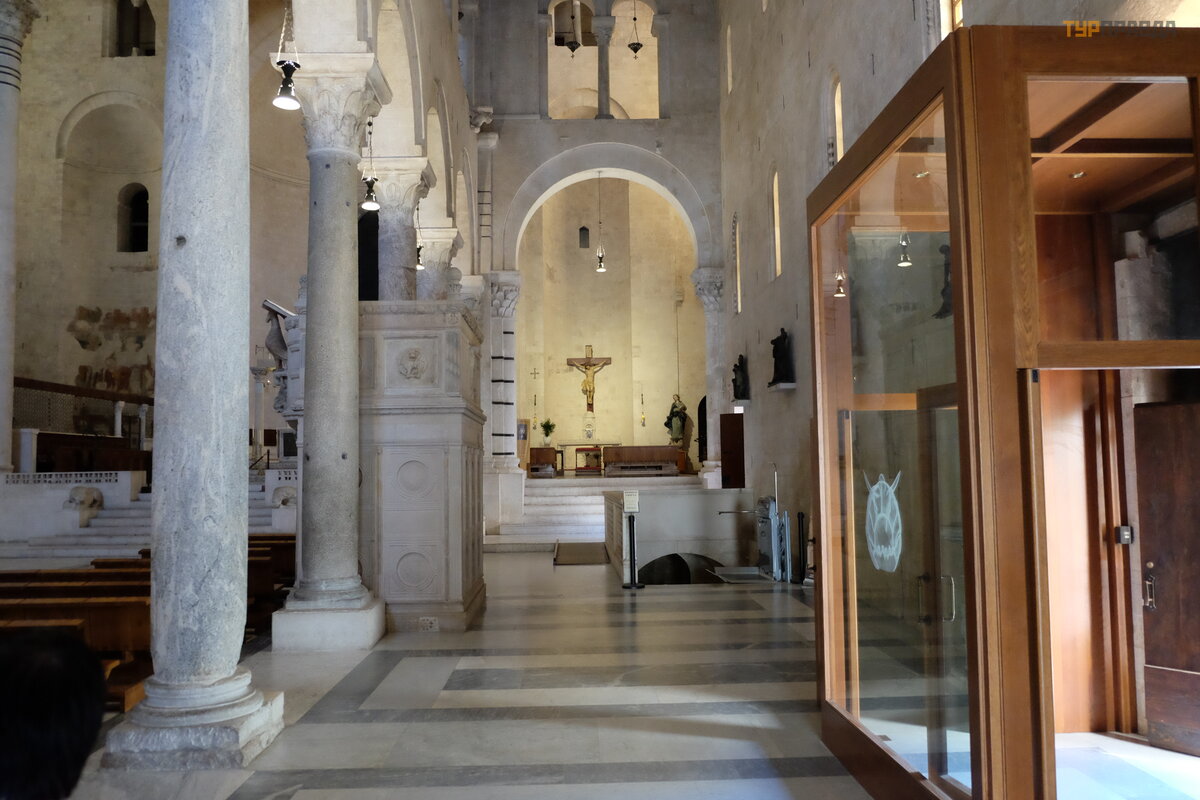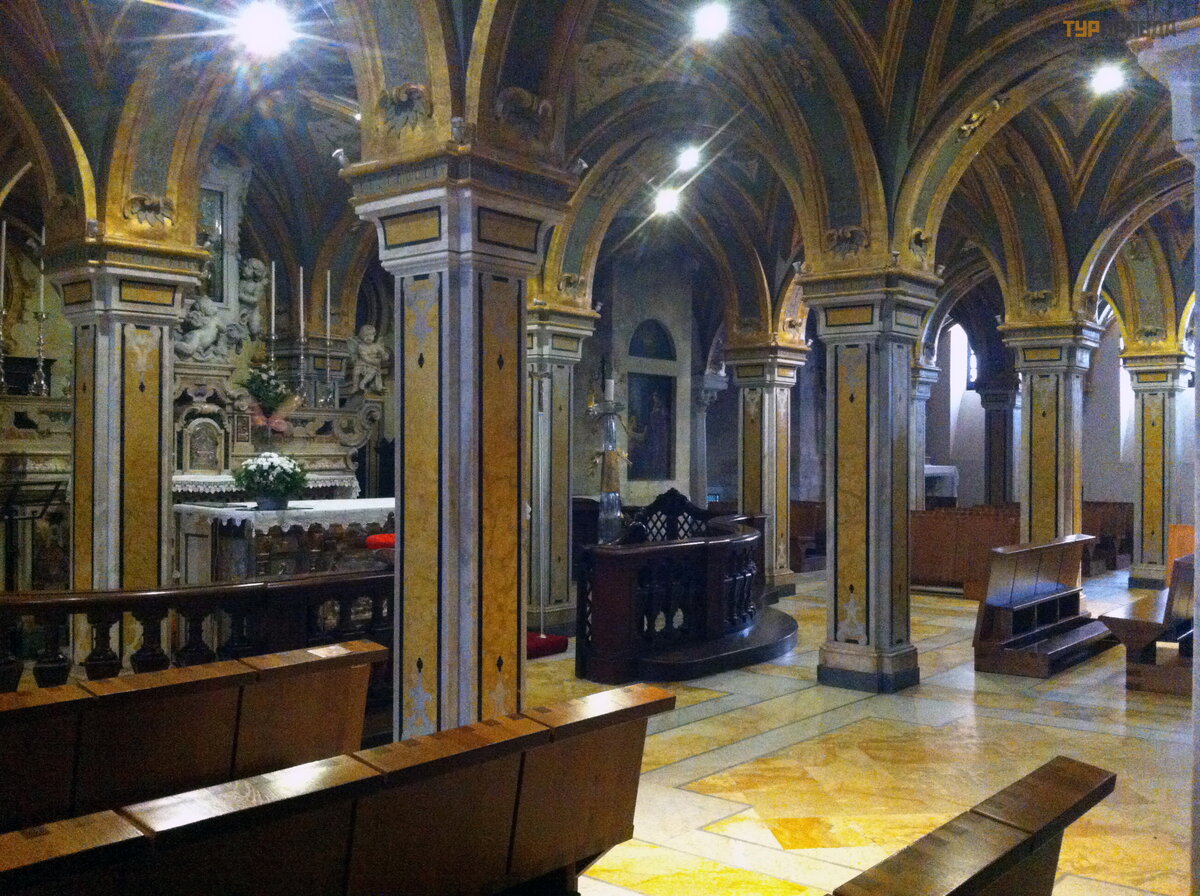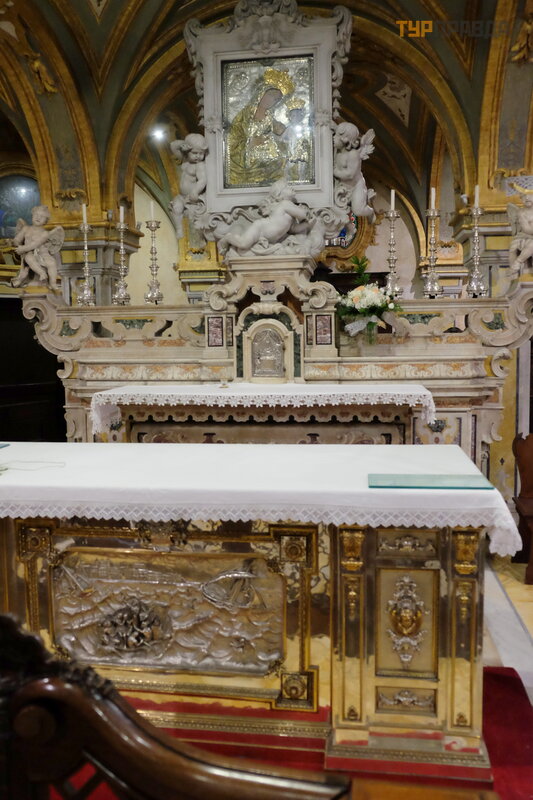Puglia and a bit of Rome. Part 4. Bari

To be continued. Start here >>>
After lunch we went for a walk around Bari. I must say that there are quite a few tourists from Russia and the republics of the former USSR in the city. Mostly they come on Thursday with an excursion to St. Nicholas Cathedral for an Orthodox service.
The history of the city dates back to the small fishing harbor of Barium, known since the 2nd century BC. BC e. Bari is divided into New and Old Towns. The locals also call the new city "Murratina" or "Muratta" - after the Napoleonic marshal Murat, king of the Kingdom of Naples in 1808-1815. I must say that Murat is honored both in Naples and in Bari, since he did a lot for the development of the region. The construction of the new district of Bari began under his reign (the first stone for the construction of the new district was laid in 1813) and was completed in the 19th century. According to the project, the streets here are even and wide, at right angles to each other with rich and pompous palaces,
theaters and shops.
Muratta is located on the territory from the Central Station to the embankment. The promenade (Lungomare) is the longest in Europe, stretching for 30 km.
The most interesting objects of the 18th century area are located along corso Vittorio Emanuele II(Corso Vittorio Emanuele) and Corso Cavour (Corso Cavour). The spacious Avenue Victor Emmanuel serves as the border between the Old Town and the rest of Bari, here are Government Palace(Palazzo del Governo). . .
. . . Nicolo Piccinni Theater (Teatro Comunale Nicolo’ Piccinni). The Teatro Piccinni is the oldest theater in Bari. The building was erected in 1854 by the Italian architect Antonio Niccolini. The theater got its name in 1855 in honor of the famous composer Niccolò Piccini, who was born in Bari.
Teatro Petruzzelli (1898-1903) - one of the major Italian theaters (Teatro Petruzzelli) - bears the name of the founders: shipbuilders brothers Onofrio and Antonio. Construction, which began in 1898, was completed five years later. In 1991, the building was completely destroyed by fire, and the theater was restored for almost 20 years.
Avenue Cavour is closed by the famous Teatro Margherita in modern style.
The theater was built in 1914. The uniqueness of the building is that it stands right on the water, on stilts. This idea is due to the fact that the Petruzzelli brothers agreed to sponsor the construction of their theater only on the condition that the city authorities would no longer build theaters on the land of Bari. They found a way out - they built the Margarita Theater on the water.
The pedestrian street Via Sparano (Sparano da Bari) stretches from the station to the Old Town with a bunch of shops, restaurants, etc.
The Mincuzzi Palace is an impressive building built in 1926 for the Mincuzzi family. Over time, the palace has developed into one of the most prestigious fashion centers in the city.
Another Venetian-style Fanzerotti palace:
On Piazza Ferrarese, where once in ancient times there was a gate that served as an entrance to the city, and now stands the Starita Palace (Palazzo Starita), the facade of which is decorated with a sundial, and the Church of Vallisa (Chiesa Vallisa).
To the north, this square merges into the Market Square (Piazza Mercantile).
Here you can also see the Column of Justice or Shame (Colonna della Giustizia o dell'Infame), where in the old days debtors were chained to the column, the chain only allowed them to sit on the statue of a lion.
The oldest building in Bari is the Castello Svevo (Swabian Castle), also called Castello di Bari, built in the first half of the 12th century. Norman king Roger II. Despite the centuries, the castle is in excellent condition and has original walls and towers. It is located on a hill to the west of the Old City. An art gallery is located in the northern part of the castle.
Via Via Venezia (Via Venezia), which stretches along the fortress walls from north to south. Throughout the entire route, beautiful panoramasof the sea, the port and new areas of Bari open up here.
The old town (Bari Vecchia) is actually located on the peninsula, the passage through the arch.
It is very interesting to walk along its curved streets, like during the day. . .
. . . and in the evening. The entrance to apartments is often directly from the street, residents often take out tables and chairs to the streets, cook, play cards.
"What a girl went! ":
It's rare in Italy,
when the cathedral is not the main one in the city. In addition to Bari, I remember this only in Padua, where all tourists tend to the Cathedral of St. Anthony of Padua. The Bari Cathedral was built at the turn of the 12th-13th centuries. on the site of the destroyed Byzantine cathedral. It was consecrated in honor of Bishop Savin, who was later canonized.
After its construction, the cathedral went through several reconstructions and restorations. The current faç ade strongly resembles that of the Basilica of St. Nicholas.
The three-portal facade is decorated with a rose window, in the upper part of which mythical creatures are depicted.
Interior restored in Norman style:
Although the crypt remained in the Gothic style, where the relics of St. Savin are kept.
In the cathedral is stored brought in the VIII century. revered icon of the Mother of God Hodegetria.
Well, here's a brief overview of Bari. The city is very convenient as a base for traveling around Puglia, trains in four directions, not far from the famous Alberobello and Matera. There are also enough good beaches in Bari.
Continued here >>>
